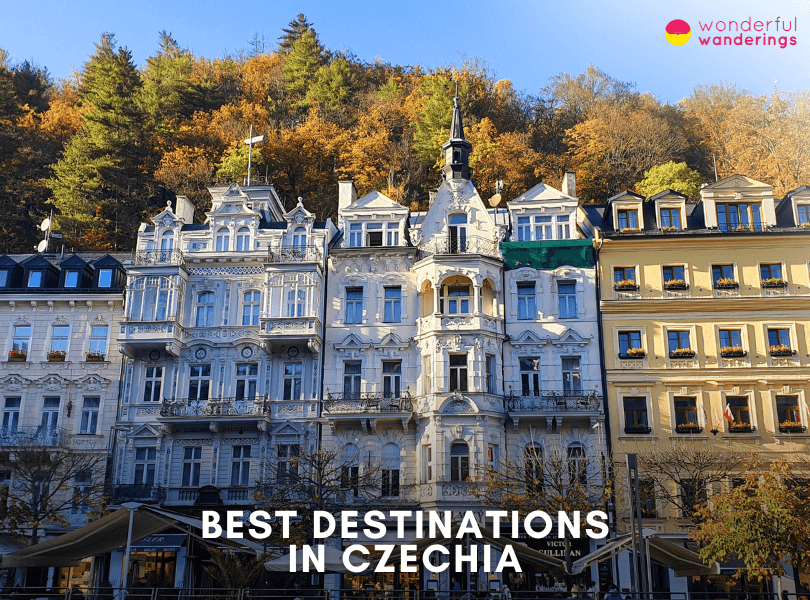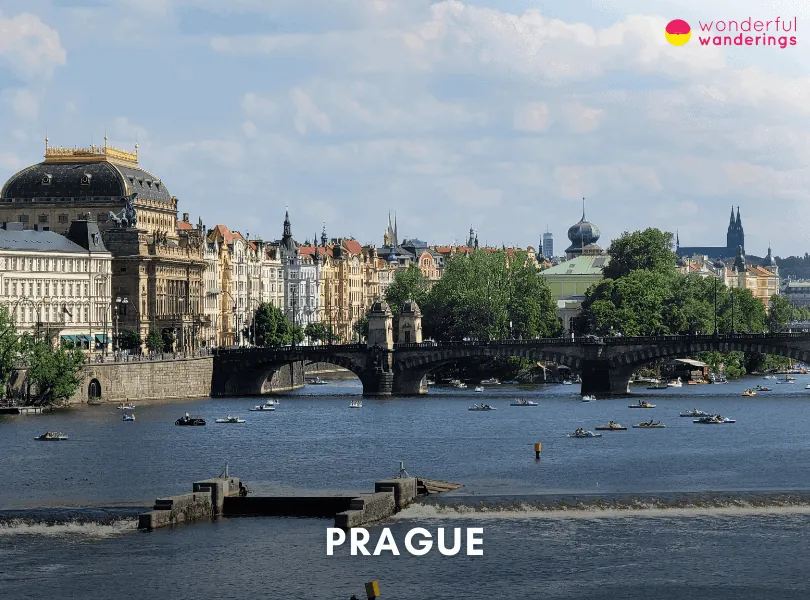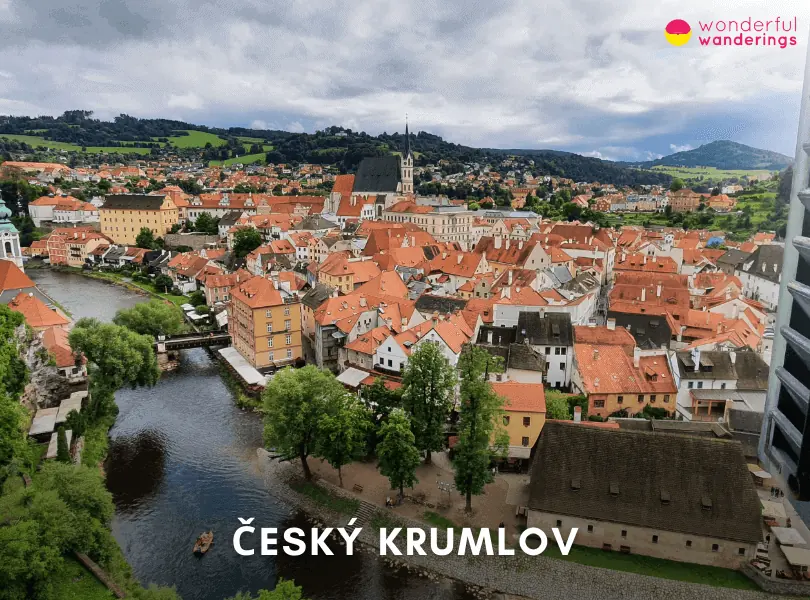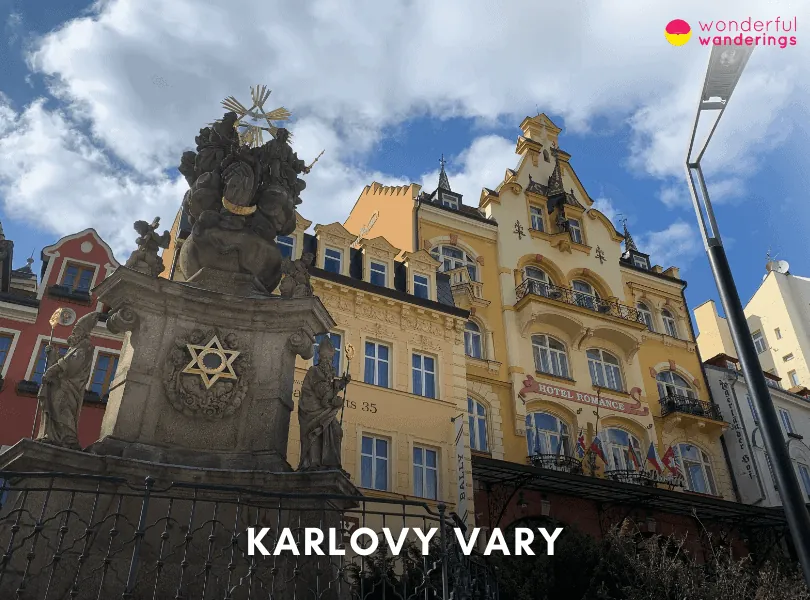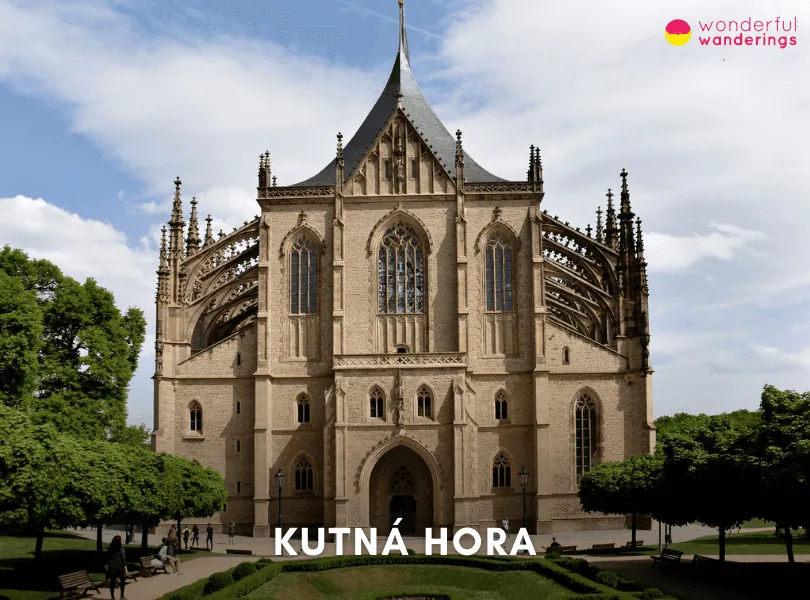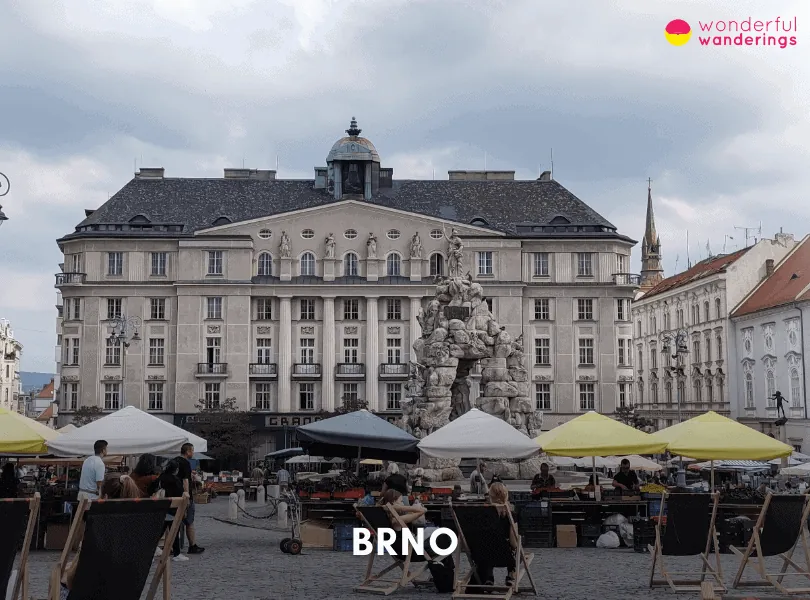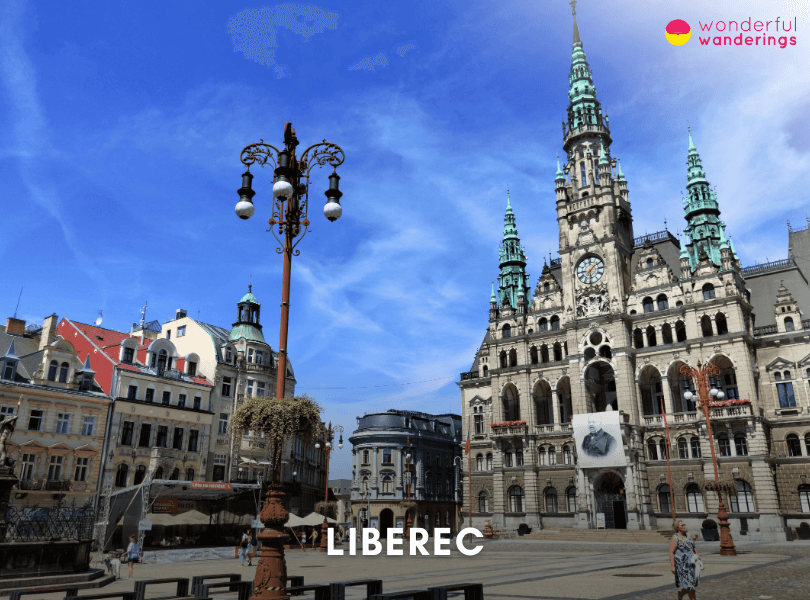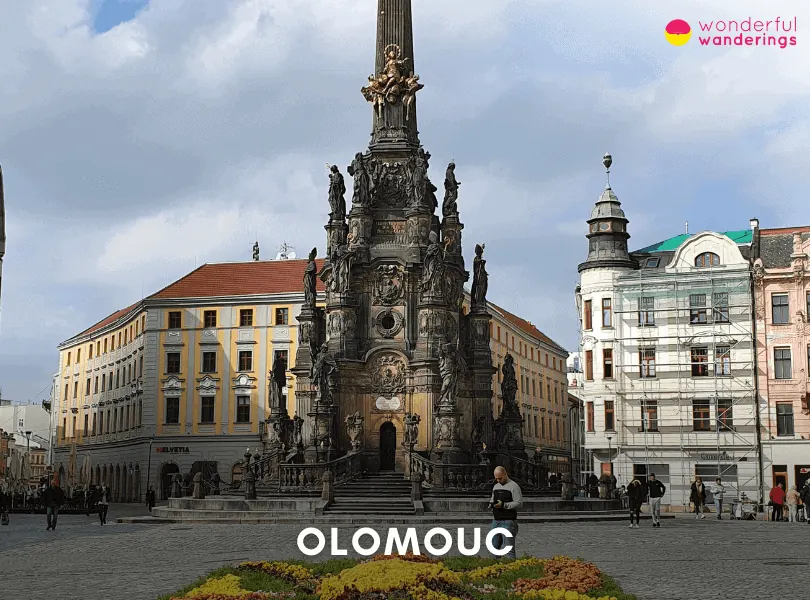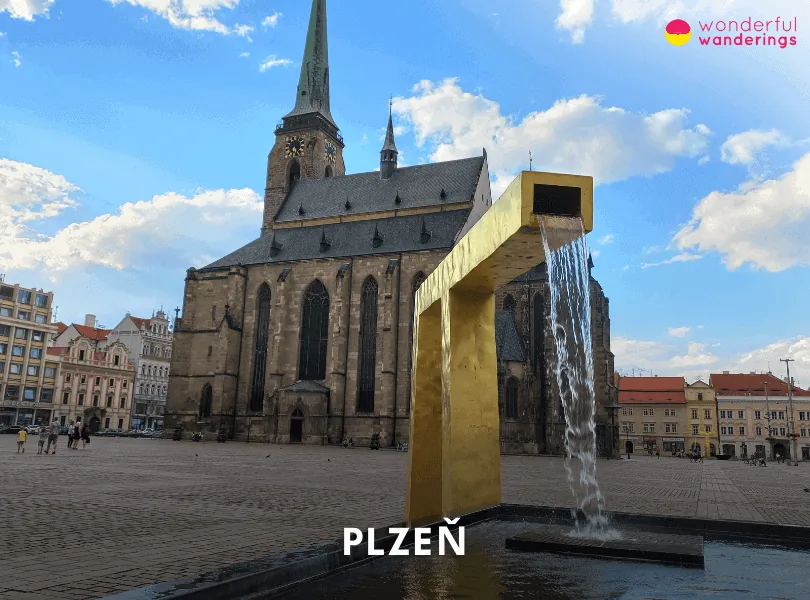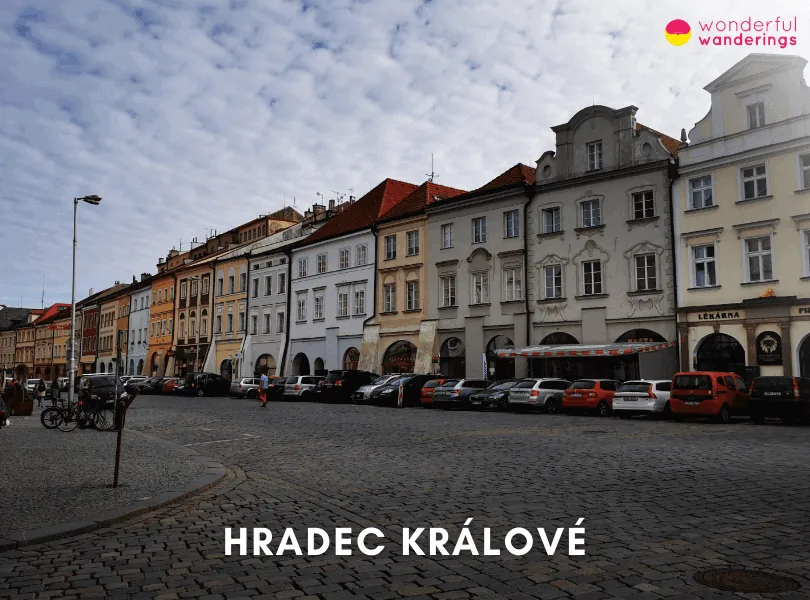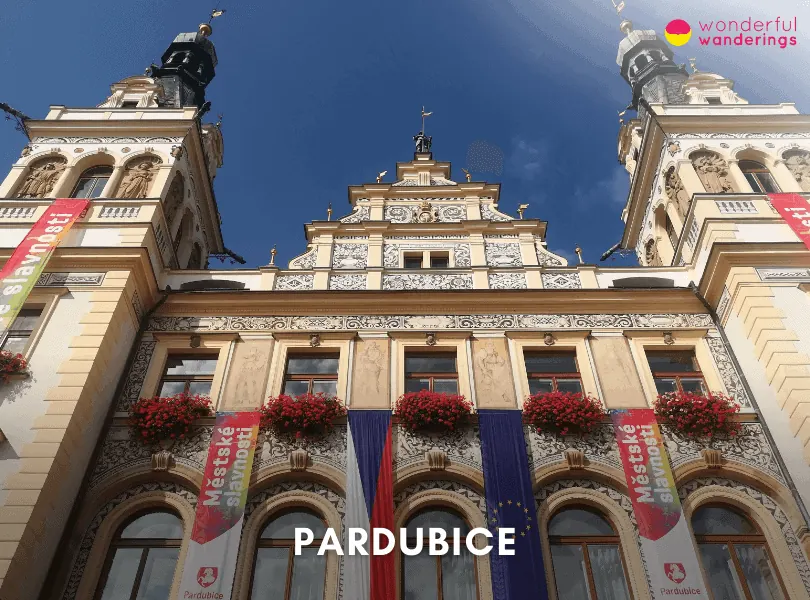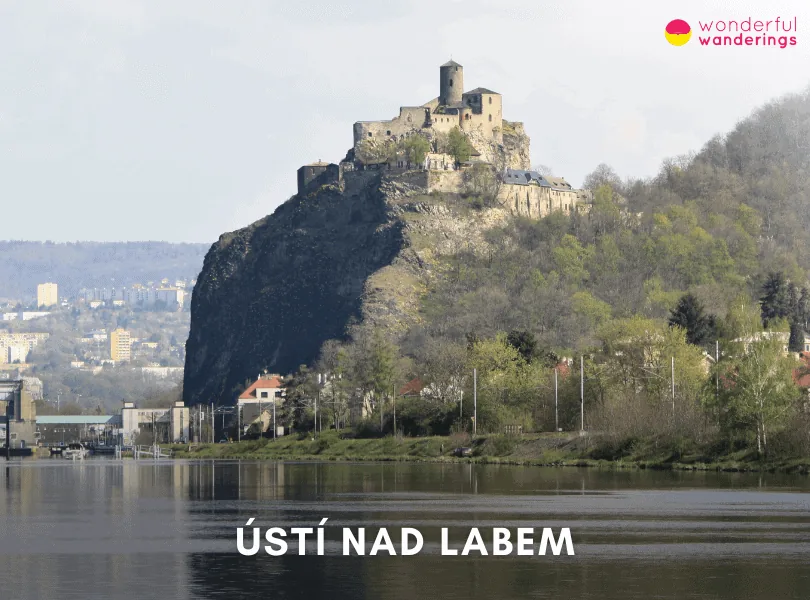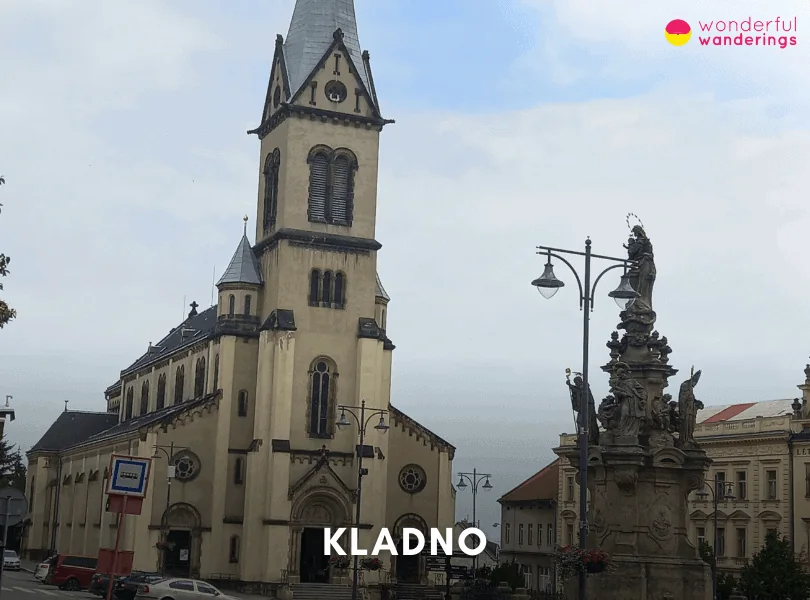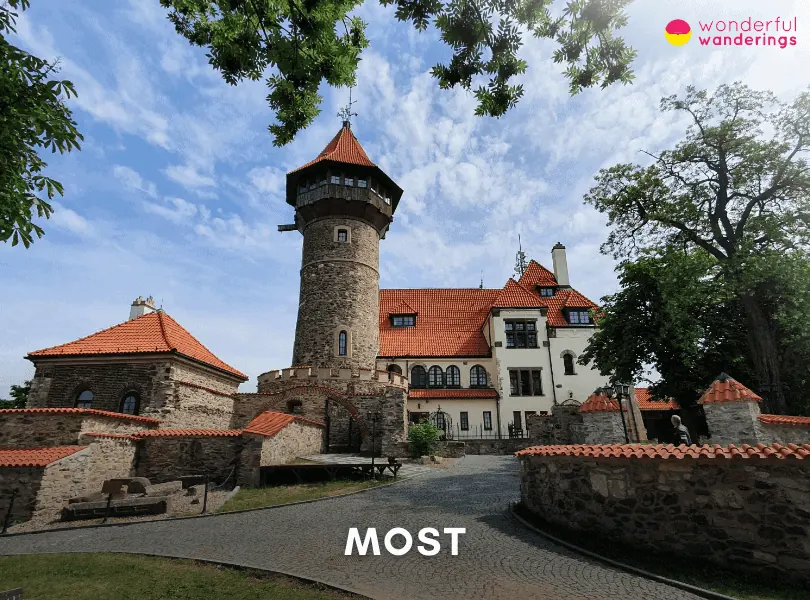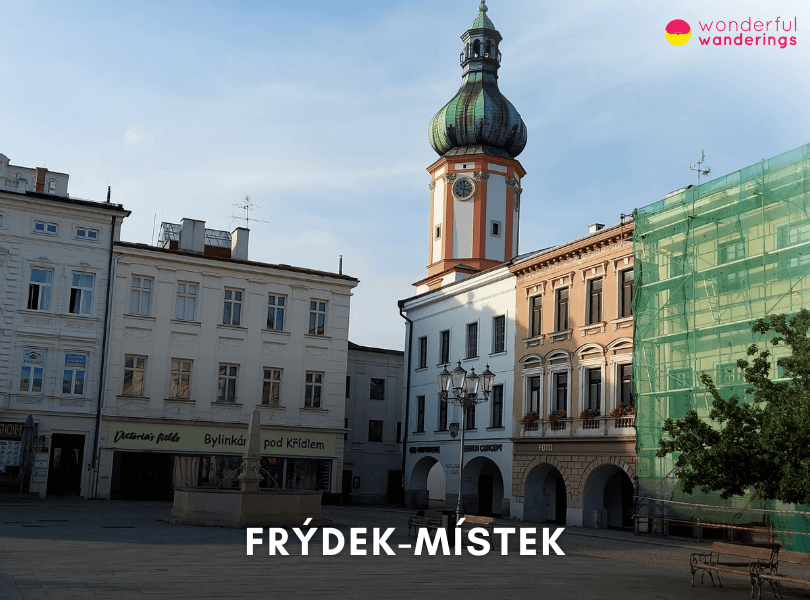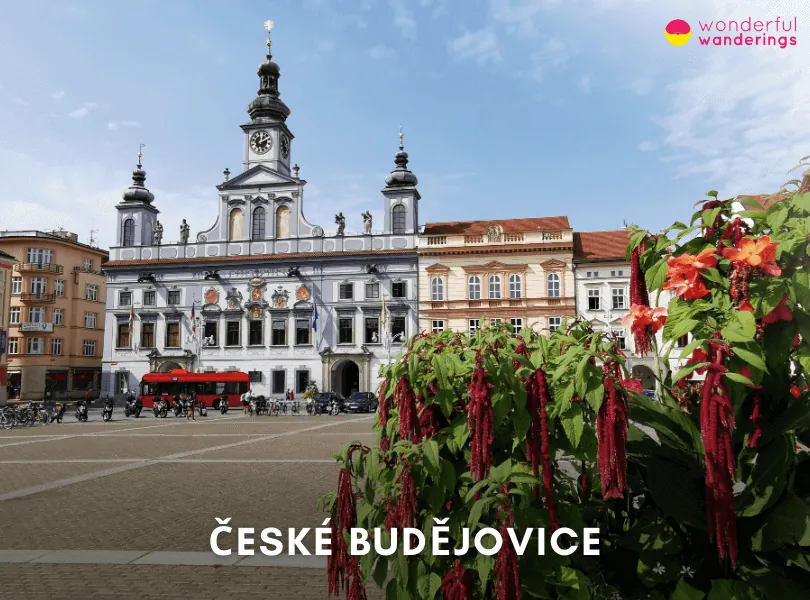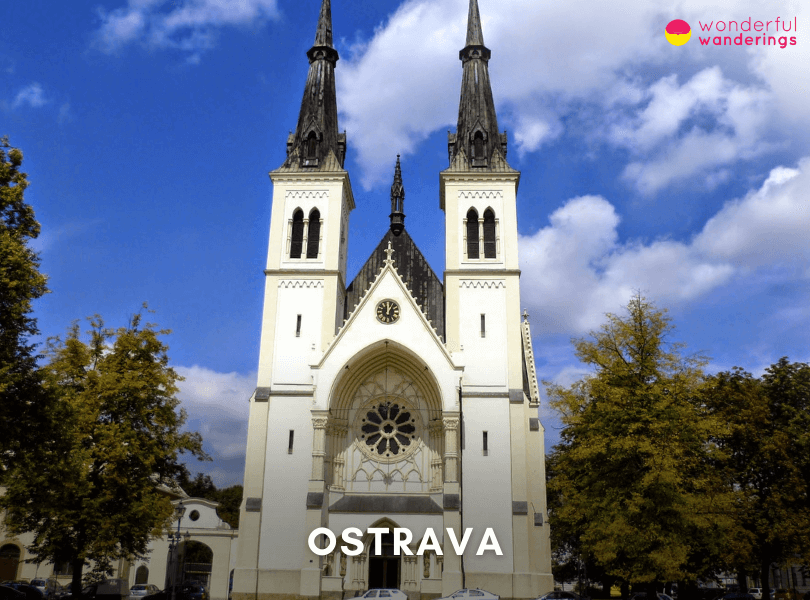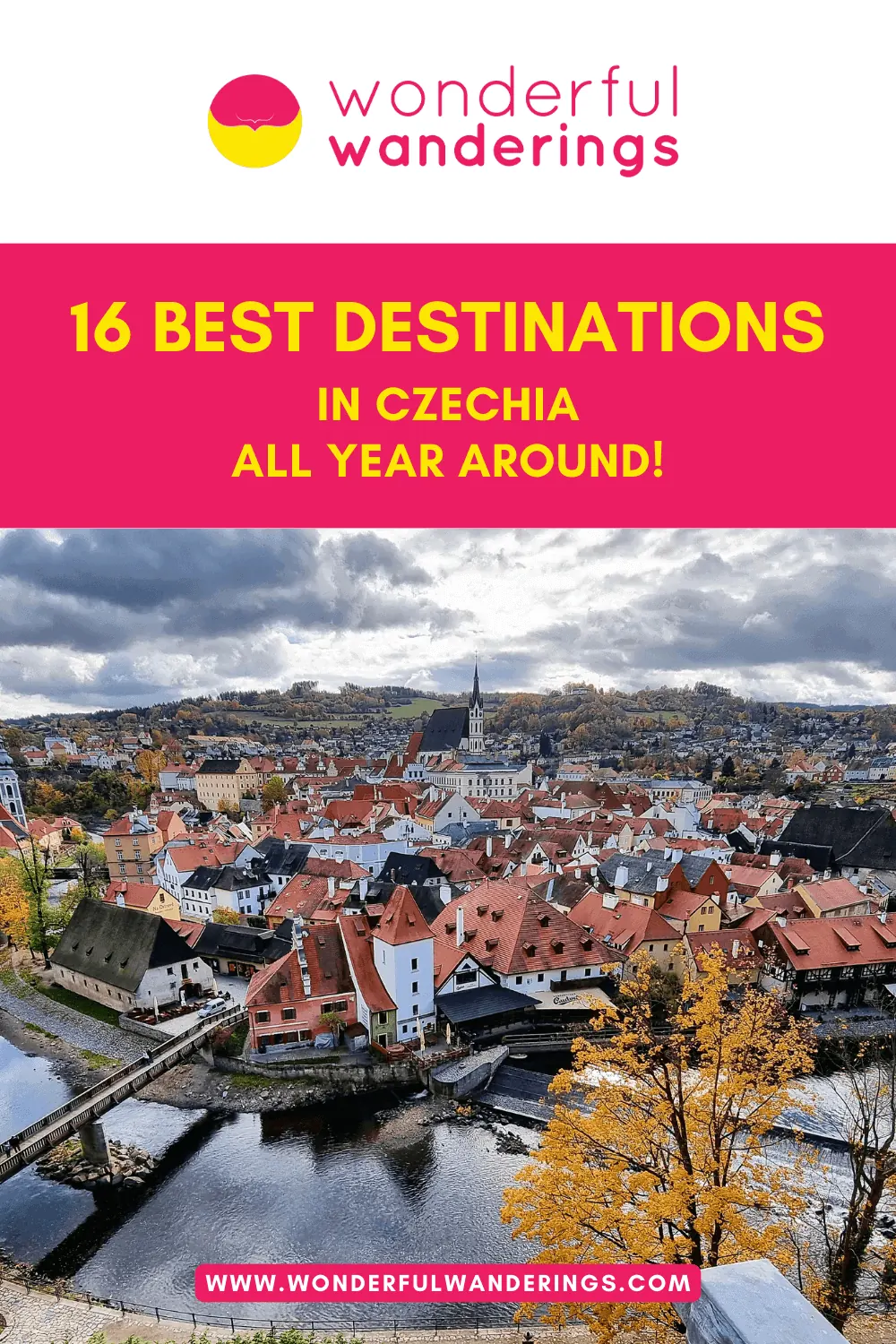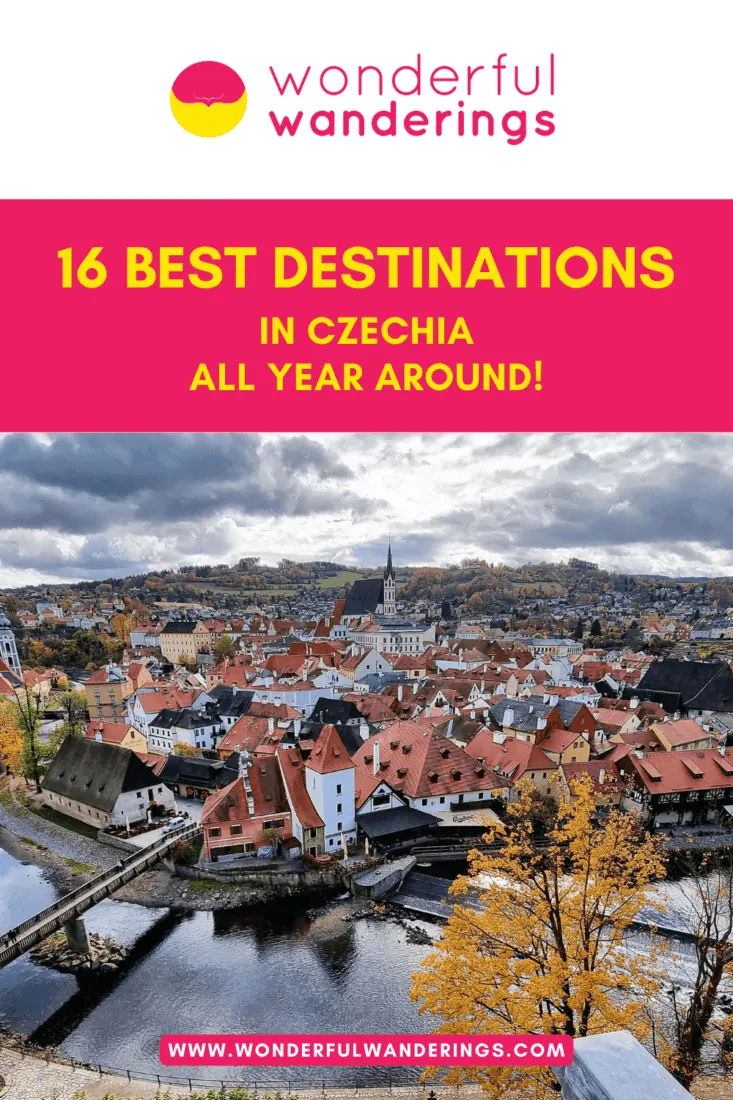Czechia, a land of history and attractions, offers an array of destinations that cater to various interests. Prague’s capital city stands out with a mix of Gothic, Renaissance, Baroque, Art Nouveau and Cubist architecture. The Prague Castle, Charles Bridge and Old Town Square are vital landmarks. Despite the scars of past wars and occupations, Prague remains a cultural, political and economic hub, attracting tourists worldwide. To the south, Český Krumlov, a UNESCO World Heritage Site, captivates visitors with its well-preserved medieval architecture and the Český Krumlov Castle complex, a testament to the town’s flourishing during the Renaissance era.
Meanwhile, the spa town of Karlovy Vary in the northwest is famous for its hot springs and historic architecture, having been a preferred destination for European elites. Brno, the second-largest city, blends Gothic, Renaissance and Baroque architecture with attractions like Špilberk Castle and the Cathedral of Sts. Peter and Paul. Liberec, known for its textile industry in northern Czechia, features Renaissance, Baroque and Art Nouveau buildings, including the Liberec Town Hall and the North Bohemian Museum. Olomouc in central Moravia showcases a mix of architectural styles and is renowned for the Holy Trinity Column and Olomouc Castle. Frýdek-Místek in the northeastern Czech Republic is recognized for Frýdek Castle and its blend of Moravian and Silesian heritage. České Budějovice, the original home of Budweiser beer, offers a mix of Gothic, Renaissance and Baroque architecture. Finally, Ostrava, the third-largest city, showcases its industrial heritage with attractions like Stodolní Street and the Silesian Ostrava Castle. Each destination in Czechia presents a unique aspect of the country’s tapestry of history, culture and architecture.
Prague, the capital city of Czechia, is the best destination to visit during the winter. The town transforms into a winter wonderland, famous for its magical Christmas markets in Old Town Square and Wenceslas Square. These markets, open from early December through early January, feature an array of wooden huts selling various items, from handicrafts and ornaments to local foods and mulled wine. Moreover, Prague hosts spectacular New Year’s Eve celebrations, including fireworks and parties over Prague Castle. Cultural events, such as the Winter Festival at Namesti Republiky and holiday concerts at stunning venues like St. Nicholas Church and the Municipal House, add to the city’s appeal. Visitors can enjoy ice skating at several pop-up rinks, including one on Střelecký Island for outdoor fun. The winter season, with its romantic atmosphere, accentuates the city’s historic architecture and cafés, offering a unique experience to visitors.
1. Prague
Prague is the capital and largest city in the Czech Republic, located in central Europe. The city’s geographic coordinates are 50°5′N 14°25′E. Prague covers an area of 496 square km (192 square miles) with a population of 1.3 million within the city limits and over 2.6 million in the greater metropolitan area. The city is an essential European political, economic and cultural center. Geographically, Prague lies on the Vltava River in the country’s northwestern part. Due to its history, Prague is known for its historic architecture, including Gothic, Renaissance, Baroque, Art Nouveau and Cubist styles.
Prague has a long and storied history spanning over 1,100 years. Founded as a castle in the 9th century, Prague soon became an essential seat of power in the region. By the 14th century, during the reign of Charles IV, it was the capital of the Holy Roman Empire. The city continued to expand, becoming a center of culture, education and trade. However, Prague suffered greatly during the religious wars of the Counter-Reformation in the 1620s. Later, it endured conflict and occupation during the world wars of the 20th century before finally being liberated.
Prague, as one of Europe’s most popular tourist destinations offers many famous attractions. Prague Castle is a must-see as it is the largest ancient castle complex in the world, spanning almost 70,000 square meters. Other top attractions include Charles Bridge, a beautiful 14th-century stone bridge lined with statues; Old Town Square, featuring architectural marvels like the Astronomical Clock and Gothic Church of Our Lady Before Tyn; the Jewish Quarter’s Old Jewish Cemetery and synagogues; Petřín Hill’s miniature Eiffel Tower; and Wenceslas Square, site of historical events and demonstrations. Lesser known gems include the Strahov Monastery Library, Vyšehrad fortress, the Dancing House and Kampa Island.
Prague’s nearest airport is Václav Havel Airport Prague, which is located 17 km (11 miles) west of the city center. As the Czech Republic’s capital and largest city, Prague is not located near any other national capital cities. However, it is relatively close to other major European capital cities – Vienna, Austria is 333 km (207 miles) away and Berlin, Germany is 349 km (217 miles) away. Both are easily accessible by train or bus. The most convenient and fastest way to get to Prague is by plane, arriving at Václav Havel Airport Prague, then taking public transport or a taxi to the city center. Prague’s central location in Europe makes it easily accessible by train from major hubs like Berlin, Vienna, Budapest and Warsaw. Buses connect Prague to many European cities as well.
The best time to visit Prague is spring from April to May or early fall from September to October. During these shoulder seasons, the weather is mild and pleasant for sightseeing, with average temperatures around 15°C (60°F) and there are fewer tourists than in summer. July and August can get quite hot, while winter brings cold weather and the chance of snow, which can be perfect for Christmas markets. Most travelers find that 3 full days is ideal for seeing Prague’s top sights at a comfortable pace while allowing time to wander the city’s streets simply. To take in more of the surrounding areas at an easier pace, enjoy Prague’s cafes and restaurants or attend events/shows, schedule 4-5 days or longer.
2. Český Krumlov
Český Krumlov is located in the South Bohemian Region of the Czech Republic. With a population of around 13,000, it is situated on the Vltava River in the southwestern part of the country, about 37 km (23 miles) north of the Austrian border. Its geographic coordinates are 48°49′N 14°19′E. Krumlov has preserved medieval architecture and a historic old town center that has remained largely unchanged for centuries. In 1992, the entire old town was designated a UNESCO World Heritage Site.
Český Krumlov has a long and storied history dating back to the 13th century when a castle was first built on the Vltava Riverbend. Over the next few centuries, the town grew up around the castle as the seat of the powerful Rosenberg family. The Renaissance era saw the castle and town flourish into a significant economic, political and cultural center. Top attractions include exploring the vast Český Krumlov Castle complex with its castle gardens, tower and museum; wandering the atmospheric old town; and enjoying river activities like rafting, canoeing or taking a paddleboat tour. The town also has several good museums, such as the Egon Schiele Art Centrum, the Museum of Regional History and the Museum of Puppetry and Toys. As the South Bohemian Region’s most popular town, Český Krumlov is not located near the nation’s capital Prague, which is 373 km (232 miles) away by car or bus.
The most convenient way to reach Český Krumlov is by bus from Prague, which takes 3 to 4 hours. There are frequent daily bus connections between Prague and Český Krumlov. Another option is to take a train to České Budějovice and then get a bus or taxi for the short drive to Český Krumlov. The best time to visit Český Krumlov is late spring through early fall, from May to September, when the weather is mild and sunny for exploring the town’s outdoor sights. Summer is the most popular season, though peak crowds come in July and August. For smaller crowds, lower prices and lovely scenery, May, June and September are good shoulder season months. Winter offers a more local vibe and festive Christmas markets from December to February but can be very cold and snowy. Český Krumlov can be seen as a day trip of at least 2 full days to appreciate without feeling rushed. Three days allow enough time to see the top attractions in town as well as enjoy the charming atmosphere at a relaxed pace, with time for dining, river activities or side trips to nearby villages.
3. Karlovy Vary
Karlovy Vary, also known by its German name Karlsbad, is a spa town situated in the northwest of the Czech Republic. The town population is around 50,000, it lies 113 km (70 miles) west of Prague and close to the German border. Its geographic coordinates are 50°14′N 12°51′E and sits in a valley of the Ohře River, surrounded by wooded hills and hot springs. The city covers an area of 59 square km (23 square miles). The hot springs, combined with historic architecture in the city center, make it a popular tourist destination as well.
Karlovy Vary was founded in the 14th century by Holy Roman Emperor Charles IV, who discovered the healing powers of the hot springs during a hunting trip. The city’s name means “Charles’ Spa” in Czech. By 1522, bathhouses were established at the springs to make use of the water’s supposed healing properties. Over the next few centuries, Karlovy Vary developed into a fashionable spa destination for European aristocracy and elites. Frequent guests included Beethoven, Chopin, Kafka, Freud and many Russian tsars. The city reached its peak popularity during the 19th century after new rail transport made the spa more accessible. World War II and 40 years under communist rule caused the city to decline. Since the Velvet Revolution of 1989, investments have revived Karlovy Vary as a top spa destination, especially with visitors from Russia and Germany. The city center was restored and inscribed as a UNESCO World Heritage Site.
Karlovy Vary’s top attractions are centered around its hot springs. Visitors can “take the waters” by drinking from 14 mineral springs around the city or getting spa treatments using the mineral-rich waters. The most famous is the geyser-like Vřídlo spring in the heart of town. Top sites include the Mill Colonnade and Hot Spring Colonnade, both long colonnades with decorative columns where people would historically “take the cure” by drinking the waters. The city also has many examples of Belle Époque architecture along tree-lined promenades. Other top attractions include the Moser Glassworks Museum, the popular Moser chocolate shop, Alžbětiny Lázně spa house and the surrounding wooded nature, which is perfect for walks, hikes and bike rides.
Karlovy Vary is located 113 km (70 miles) west of Prague, the capital and largest city of the Czech Republic. The closest international airport is Václav Havel Airport Prague, which sits 140 km (87 miles) east of Karlovy Vary. The drive by car or bus takes around 1.5 hours between Karlovy Vary and Prague. Karlovy Vary does not have a commercial airport, only a small private airport for sport-flying purposes. The most convenient way to reach Karlovy Vary is by direct bus from Prague. Trains connect the two cities several times daily, with a travel time of 2.5-3 hours. Other options include renting a car and driving from Prague along the D6 highway or arranging a private transfer.
The best time to visit Karlovy Vary is from late April to October during the milder spring, summer and fall seasons. July and August are the most popular months when temperatures average around 68°F (20°C). However, May, June and September are also excellent times with smaller crowds, lower prices, pleasant weather and beautiful fall foliage by October. Winters can be very cold but the Christmas markets in December are charming. Most visitors find that 2 full days are ideal for relaxing and seeing the top attractions in Karlovy Vary without feeling rushed. This allows enough time to stroll the historic center, sample several mineral springs, tour top sights like the Mill Colonnade and Moser Museum, enjoy spa treatments, dine at restaurants and soak in the atmosphere.
4. Kutná Hora
Kutná Hora is a historic town located in the Central Bohemian Region of the Czech Republic. The town population is around 20,000, it sits in a valley basin surrounded by wooded hills and farmland. The town’s geographic coordinates are 49°56′N 15°16′E. Kutná Hora has well-preserved Gothic, Baroque and Renaissance architecture in its old town center, which led to it being designated a UNESCO World Heritage Site in 1995. Once the second most important city after Prague in the Kingdom of Bohemia, Kutná Hora owed its prosperity to the silver ore mines that operated here in the Middle Ages.
The history of Kutná Hora is closely tied to silver mining. The town began in the 13th century as a settlement near rich silver deposits. When King Wenceslaus II issued a decree in 1300 bringing the mines under royal ownership, Kutná Hora’s silver helped fill the king’s treasury and mint the first Prague groschen coins. The town grew rapidly as the center of mining administration. By the 16th century, the silver mines began to be exhausted. Although it went into economic decline, many fine buildings and churches were left behind from its heyday, including the famous St. Barbara’s Cathedral. The town survived periods of war, occupation and neglect before rediscovering its heritage.
Kutná Hora offers several main attractions for visitors. The most famous site is St. Barbara’s Cathedral, a magnificent Gothic church dedicated to the patron saint of miners that took over 500 years to complete. It has vaulted ceilings and many decorative features and symbolizes Kutná Hora’s past. Another top attraction is the Sedlec Ossuary Chapel, which contains artistically arranged human skeletal bones and skulls from over 40,000 people. Other top sites include the Italian Court, the former Royal Mint built in the 13th century; the Stone House, a 15th-century aristocratic residence; Hrádek (or the Czech Museum of Silver), which offers tours of medieval silver mines; the 15th-century Stone Fountain; and the historic town center with many examples of Baroque architecture and Gothic churches like St. James’ Church.
The closest international airport to Kutná Hora is Václav Havel Airport Prague, which is located 75 km (47 miles) west of the town. As the capital and largest city in the Czech Republic, Prague is also the nearest major city to Kutná Hora, situated 70 km (44 miles) to the west. The drive by car or bus between Kutná Hora and Prague usually takes around an hour, depending on traffic. Kutná Hora makes an easy and popular day trip destination from Prague. The most convenient and fastest way to reach Kutná Hora is by direct train from Prague’s main train station, Prague hlavní nádraží. Frequent trains make the journey in just under an hour.
Kutná Hora can be visited year-round but the best times are spring through fall, from April to October. Summer months bring good weather for exploring Kutná Hora’s outdoor sights, with peak visitation in July and August. However, spring and fall offer mild temperatures that are ideal for sightseeing as well, along with fewer tourists and lower prices. Winter can be very cold but the town may appeal to some visitors with its festive Christmas markets held during December. Kutná Hora’s top sights can be seen in just one day, allowing 2 full days here at a more relaxed pace that let visitors take in more of the town’s museums, architecture and atmosphere without feeling rushed.
5. Brno
Brno is the second largest city in the Czech Republic, located in the southeastern part of the country. The city population is over 380,000 within the city limits and almost 650,000 in the greater metropolitan area. Brno covers an area of 230 square km (89 square miles) and its geographic coordinates are 49°11′47′′N 16°36′43′′E. The center of Brno features noteworthy examples of Gothic, Renaissance and Baroque architecture, including the 13th century Špilberk Castle and the Cathedral of Sts. Peter and Paul. Evidence of human settlement in Brno dates back thousands of years. A Celtic tribe called the Boii established a settlement called Špilberk Castle in the site during the 3rd century BC. In the early 13th century, a royal town was established under the name of Brno, derived from the Old Czech word “brnění” meaning armor or fortification. As the Margraviate of Moravia’s capital, Brno prospered in the Middle Ages as a center for trade and crafts. After the Thirty Years’ War in the 17th century, the city had to be largely rebuilt. Later, during the 18th and 19th centuries, Brno became an important center of industry and culture. Occupied twice during the world wars in the 20th century, Brno suffered heavy damage.
Brno is the Czech Republic’s second most visited city, offering many cultural attractions and sites. Top attractions include Špilberk Castle, an imposing 13th century hilltop castle complex with Gothic architecture, permanent exhibitions and beautiful views over the city. Other highlights are the Cathedral of Sts. Peter and Paul, one of the nation’s most important Gothic churches and the iconic Capuchin Monastery with its ossuary crypt. The historic Old Town Hall features the city’s famous crocodile attraction and the Old Town Hall Tower offers scenic vistas over red-tiled rooftops. The Villa Tugendhat is a famous example of modern functionalist architecture and a UNESCO site. The Moravian Gallery and Museum of Romani Culture are also excellent.
Brno nearest airport is Brno-Tuřany Airport, located 9 km (6 miles) southeast of the city center. As the capital of the Czech Republic, Prague is the nearest major city to Brno, located 201 km (125 miles) to the west. The drive by car or bus between the two cities takes about two hours. Travelers arriving at Václav Havel Airport Prague can take a direct bus or train to reach Brno in 2-3 hours. The most convenient way to get to Brno is by direct train from Prague, Vienna, Bratislava or Budapest. Fast trains connect Brno to Prague every hour, taking about 2 hours. From Vienna, frequent trains reach Brno in just 1.5 hours. Buses also run direct routes between Brno and other major Central European cities.
The best time to visit Brno is late spring through early autumn, from May to September. Summers here bring warm weather perfect for enjoying beer gardens, cafes and cultural events around the city. Though summer is popular, spring and fall tend to be less crowded. Winters can be bitterly cold but Christmas markets in December create an atmosphere. Brno’s top sites can be seen in just 1-2 days, allowing 3 full days makes for a more relaxed experience without feeling rushed. In three days, visitors can take in attractions like Špilberk Castle, the Old Town Hall, Cathedral and Villa Tugendhat while still having time to soak up the city’s atmosphere with coffee breaks and people-watching.
6. Liberec
Liberec is a city located in the northern part of the Czech Republic, near the border with Germany and Poland. The city population is over 100,000 within the city limits and almost 150,000 in the greater metropolitan area, Liberec is the fifth-largest city in the Czech Republic and the largest city in the historical region of Bohemia. Liberec lies on the Lusatian Neisse River, surrounded by the Jizera Mountains and the geographic coordinates are 50°46′38′′N 15°3′4′′E. Liberec has a long history in textile production and trade which has earned it the nickname “Bohemian Manchester”. The city center features noteworthy examples of Renaissance, Baroque and Art Nouveau architecture. Popular attractions include the Liberec Town Hall, the North Bohemian Museum and the Ještěd TV Tower. The surrounding countryside provides plenty of opportunities for outdoor recreation.
The first written mention of Liberec dates back to the 14th century. By the 16th century it was an important center of trade and crafts. The prosperous textile industry began developing in the 18th century under the patronage of German-Bohemian aristocratic families like the Liebiegs and Riedls who founded large textile factories. This brought economic growth and fame to Liberec. In the 19th century the city flourished even more as a textile manufacturing hub, giving rise to its “Bohemian Manchester” nickname. However, the post-WWII expulsion of Germans left the textile industry struggling. Under communist rule, the city was repopulated and rebuilt. Since the Velvet Revolution in 1989, foreign investment has helped Liberec regain its economic strength.
Liberec is the largest city in the Bohemian Paradise region, offering many cultural and natural attractions. Top sites include the Liberec Town Hall, a Neo-Renaissance building on Liberia’s main square featuring elaborate Gothic Revival architecture and stained glass. Its tower offers panoramic views over the city. The North Bohemian Museum chronicles regional history and is known for its large textile and glass collections. The Ještěd TV Tower is a modernist structure atop the Ještěd Mountain resembling a spaceship, offering a hotel, restaurant and observation deck with sweeping vistas.
The nearest international airport is Václav Havel Airport Prague, located 140 km (87 miles) southwest of Liberec. Prague is the closest major city to Liberec, situated 140 km (87 miles) away. The drive by car or bus from Liberec to Prague usually takes around 1.5 hours depending on traffic. Liberec does not have its own commercial airport, only a small sport airfield. Travelers would land in Prague and take ground transportation to reach Liberec. The most convenient and fastest way to reach Liberec is by direct bus from Prague. Trains also connect the two cities several times per day with a travel time of 2-3 hours.
The best time to visit Liberec is late spring through early fall, from May to October. It provides mild weather ideal for enjoying Liberec’s outdoor attractions and old town sights. July and August are the most popular months. There are also fewer visitors and lower hotel rates in winter aside from during the prestigious Jizerska Padesatka cross-country ski race in early February. Liberec could be seen in 1-2 days, allowing 3 full days makes for a more relaxed experience without feeling rushed.
7. Olomouc
Olomouc is an historic city located in the central Moravia region of the Czech Republic. The city has a population of over 100,000, it sits on the Morava River and is surrounded by fertile countryside. The city’s geographic coordinates are 49°35′38′′N 17°15′3′′E. Olomouc has many well-preserved examples of Gothic, Renaissance, Baroque and Art Nouveau architecture concentrated in its compact old town, which led it to be designated a UNESCO World Heritage Site in 2000. Major landmarks include the Holy Trinity Column, a Baroque sculpture and UNESCO site and Olomouc Castle with origins back to the 10th century.
Olomouc has a long history going back over 1,000 years to the Great Moravian Empire. A Slavic settlement arose near Olomouc Castle, which was established around the 10th century. The city became an important seat of political and ecclesiastical power in the region during medieval times under Bohemian rule. It was destroyed during wars in the 17th century, Olomouc was rebuilt in a Baroque style. Later, during the 18th and 19th centuries, it developed as a center of Czech nationalism and culture. In the 20th century, Olomouc was occupied by Nazi Germany then the Soviet Army during World War II.
Olomouc offers many cultural sights and landmarks. Top attractions include the Holy Trinity Column, an elaborate 18th century Baroque sculpture and UNESCO site, Saint Wenceslas Cathedral with its Gothic tower, Olomouc Castle and Archdiocesan Museum with origins back to the 10th century, the historic astronomical clock; the Church of Saint Maurice; and many beautiful fountains such as the Arion Fountain. The city also has several excellent museums like the Archdiocesan Museum with its art collections, the Museum of Modern Art and the Olomouc Museum of Art showcasing Czech artwork.
The closest international airport is Ostrava Leos Janacek Airport, located 122 km (76 miles) northeast of Olomouc. As the capital and largest city in the Czech Republic, Prague is the nearest major city to Olomouc, situated about 230 km (143 miles) to the west. The easiest way to reach Olomouc is by direct train from Prague’s main train station, with comfortable rides taking around 2.5-3 hours. There are frequent daily train connections between the two cities.
The best time to visit Olomouc is late spring through early fall, from May to September, which is considered the peak season to visit Olomouc. Summers here bring warm weather perfect for dining at sidewalk cafes and enjoying festivals and events. Winters get quite cold but Christmas markets in December are popular. Olomouc can be seen in a day or two, allowing 3-4 full days makes for a more relaxed experience without feeling rushed. This provides enough time to take in attractions like the Holy Trinity Column, Olomouc Castle, Saint Wenceslas Cathedral and museums, while also enjoying the city’s cozy cafes, parks and atmosphere at leisure.
8. Plzeň
Plzeň or known as Pilsen in English is a city located in western Bohemia in the Czech Republic, about 90 km west of Prague. The population has over 170,000 within the city limits and almost 320,000 in the greater metropolitan area, Plzeň is the fourth largest city in the Czech Republic after Prague, Brno and Ostrava. Its geographic coordinates are 49°45′N 13°23′E. The city covers an area of 137 square km (53 square miles). Plzeň is best known as the birthplace of the Pilsner style lager beer in 1842, when local breweries combined lighter malt with Saaz hops and a new bottom-fermenting brewing process. This innovative beer became hugely successful and the Pilsner style spread around the world, influencing modern lager production globally. Other than the brewing heritage, top attractions in Plzeň include historic architecture like the Gothic St. Bartholomew’s Cathedral and Renaissance Town Hall, along with large town squares.
Plzeň offers many cultural attractions and landmarks to visitors. Top sites include the Pilsner Urquell Brewery, where visitors can learn about the world-famous beer’s history and sample it straight from oak barrels in the cellars on an interesting brewery tour. Other top attractions are St. Bartholomew’s Cathedral, the city’s most important Gothic church featuring Europe’s highest church tower at 102.5 meters; the Renaissance Old Town Hall with its astronomical clock; Plzeň’s Underground, an extensive labyrinth of passageways beneath the city center; the Great Synagogue, the third largest synagogue in the world; Patton Memorial Pilsen, a museum dedicated to the liberation by U.S. troops under General Patton at the end of World War II; and the expansive Smetana and Bolevecký Parks for relaxation.
Plzeň is served by Václav Havel Airport Prague located 96 km (60 miles) to the east, about a 1 hour drive by car or bus. As the capital and largest city in the Czech Republic, Prague is the closest major city to Plzeň, situated around 90 km (56 miles) away, which is about a 1 hour drive. The easiest and fastest way to travel from Prague to Plzeň is by direct train. Czech Railways operates comfortable train routes connecting Prague’s main train station to Plzeň about every hour, with a travel time of 1-1.5 hours.
Plzeň has good train connections to other major cities like Brno, Ostrava, České Budějovice or Karlovy Vary among others. The city also has an efficient network of public transportation including trams, trolleybuses and buses for getting around.
The best time to visit Plzen is late spring to early fall, from May to September. Summers here bring warm weather perfect for enjoying the city’s beer gardens, restaurants and cultural events. Key festivals like the Pilsen Festivities to honor Plzeň’s liberation and the Pilsner Fest beer celebration take place in May and August. Plzeň’s top attractions can be seen just 1-2 days, allowing 3 full days makes for a more relaxed experience to take in the sights, enjoy the city’s famous beer and get a good taste of the culture.
9. Hradec Králové
Hradec Králové is a city located in the Hradec Králové Region of the Czech Republic. The city has a population of over 93,000 within the city limits, it is the 8th largest city in the Czech Republic. Hradec Králové lies at the confluence of the Elbe and Orlice rivers and its geographic coordinates are 50°12′37′′N 15°50′1′′E. The city covers an area of 105 square km (41 square miles). Hradec Králové has a well-preserved historic center featuring many examples of Gothic, Renaissance and Baroque architecture. Popular landmarks include the White Tower, the Gothic Cathedral of the Holy Spirit and the Renaissance Archbishop’s Palace. The city also serves as an important industrial and commercial hub.
Hradec Králové has a long history dating back to the 10th century AD when a castle was first built here. By the 13th century it had become a significant center of power as part of the Kingdom of Bohemia. King Charles IV made it one of the most important cities in the country during his reign in the 14th century. After changing hands between noble families and royalty over the centuries, Hradec Králové joined the Habsburg monarchy in 1526. It was occupied by Prussia during the Austro-Prussian War but returned to Czech control after World War I. Though damaged during World War II, the historic center remained intact. Hradec Králové offers many cultural sights and landmarks. Top attractions include the Gothic Cathedral of the Holy Spirit with its rare two-tower design and Renaissance tombs; the White Tower, an iconic symbol of the city offering panoramic views from its gallery; the Archbishop’s Palace showcasing exhibits on regional history; the Museum of Eastern Bohemia housing extensive collections related to the region; the Pharmacy Museum with a 17th century laboratory; Petrof Piano Museum at the Petrof piano factory; and the African Museum Dr. Emil Holub chronicling early 20th century African expeditions. Lovely parks and green spaces like the Botanical Gardens provide scenic areas amidst the city as well.
The nearest international airport is Václav Havel Airport Prague, located 100 km (62 miles) west of Hradec Králové. As the capital and largest city in the Czech Republic, Prague is also the closest major city to Hradec Králové, situated 100 km (62 miles) away. The drive by car or bus between the two cities usually takes around 1 hour. Hradec Králové does have a small regional airport, Hradec Králové Airport, but it only offers domestic flights within the Czech Republic. The easiest and fastest way to travel from Prague to Hradec Králové is by direct train or bus. Czech Railways operates very comfortable train routes connecting Prague’s main train station to Hradec Králové almost every hour, with a travel time of 1-1.5 hours.
The best time to visit Hradec Králové is late spring through early fall, from May to September. July and August are popular summer months to enjoy cafes and events, but also draw more tourists. For smaller crowds and pleasant weather, May-June and September-October are good shoulder season months to explore the city. Winters are quite cold but the Christmas markets in December create a festive atmosphere. Hradec Králové’s top sites could be seen in 1-2 days, allowing 3 full days makes for a more relaxed experience without feeling rushed. This provides enough time to take in attractions like the Cathedral, White Tower and museums, dine at some restaurants and soak up the local vibe.
10. Pardubice
Pardubice is a city located in the eastern part of the Czech Republic. It lies at the confluence of the Elbe and Chrudimska rivers and has a population of around 92,000 inhabitants. Geographically, Pardubice is situated in the Elbe lowlands with an average elevation of 220 meters above sea level and coordinates at 50°2′19′′N 15°46′45′′E. Its historic city center is well preserved and protected by law as an urban monument reservation. The main square, Perštýnské náměstí, contains many examples of Renaissance architecture and is dominated by the Green Gate and remnants of the old fortifications.
The first written reference to Pardubice dates back to 1295, when a monastery was located at the Church of St. Bartholomew. Pardubice was granted town privileges sometime between 1332-1340 under its then owner Arnošt of Hostýn. In 1491, the town was purchased by nobleman Vilém of Pernštejn, who transformed it into a center reflecting his high status. This ushered in Pardubice’s golden era. The legacy of the Pernštejn family can still be seen today in the well-preserved historic center.
Some of the top attractions in Pardubice include Pardubice Chateau dating from the late 15th/early 16th century, containing original frescos. Pernštýnské Square is lined with elegant Renaissance houses and arcades. Grand Pardubice Steeplechase, Aqua Centrum, Kunětická Hora and Pardubice Gingerbread. The nearest airport to Pardubice is Pardubice Airport, which is located 3 km (2 miles) away on the western outskirts of the city. The best way to travel from Pardubice to nearby Hradec Králové is by direct train. There are frequent train connections that cover the distance of 29 km (18 miles) in around 20-30 minutes depending on the train type.
The best time to visit Pardubice is during the spring, summer and early autumn months from April to October. The weather is usually pleasant and mild, with average temperatures around 20°C (68°F), making it ideal for sightseeing and outdoor activities. Key annual events like the Grand Pardubice steeplechase also take place in early October. Winter can be very cold but the Christmas markets from December are also worth experiencing. 2-3 days is sufficient to see the major attractions in Pardubice and get a good overall experience of the city. In 2 days, you could visit the historic center, chateau, water park, racecourse museum and more, while having time to enjoy the atmosphere at local restaurants and cafés.
11. Ústí nad Labem
Ústí nad Labem is the 9th most populous city in the Czech Republic with a population of 91,963. It is located in northern Bohemia on the Elbe (Labe) River and sits at an elevation of 218 meters above sea level. The GPS coordinates for Ústí nad Labem are 50°39′30′′N 14°2′30′′E. Ústí nad Labem is the capital and largest city of the Ústí nad Labem Region. It is an important industrial center and river port, as well as a railway junction connecting the Czech Republic and Germany. The city has a long history dating back to the 11th century and has many cultural and historical attractions. Ústí nad Labem was first mentioned in written documents from 1056-1057 AD. In the 13th century it gained the status of a royal town under King Wenceslaus I. The city was an important center of trade and commerce in medieval times. In the 19th century, Ústí underwent rapid industrialization with the expansion of coal mining, river transport on the Elbe and railway connections. It became one of the leading industrial hubs in Bohemia and saw major population growth during this period. After World War II, the city’s German population was expelled and the city was rebuilt in a combination of socialist and modern architectural styles.
Some of the top attractions and sights to see in Ústí nad Labem include Střekov Castle which is a medieval castle overlooking the city from a basalt rock across the Elbe River. Municipal Museum that covers the art, history and ethnography of the region with over 250,000 artifacts. Masarykova Street is a main pedestrian zone with many shops, restaurants and cafés. The nearest international airport to Ústí nad Labem is Dresden Airport, located 55.8 km (34.6 miles) away. The drive takes about 50 minutes by car. The capital city of Prague is 94.9 km (59 miles) from Ústí nad Labem, about a 1.5 hour drive by car.
Some of the most convenient ways to reach Ústí nad Labem include frequent direct train connections from Prague and other major Czech cities. Direct bus routes available from Prague and other cities. Buses take slightly longer than trains. Located just off the D8 motorway which links Prague and Dresden, Germany. The best time to visit Ústí nad Labem is late spring through early fall, from May to September. The weather is mild and sunny, perfect for outdoor activities. Key events like music festivals also take place during the summer. Fall brings beautiful autumn colors to the surrounding wooded hills while winter activities like skiing in the Ore Mountains are also popular for visitors. 2 full days is sufficient to see the top attractions in the city of Ústí nad Labem itself.
12. Kladno
Kladno is an industrial city located in the Central Bohemian Region of the Czech Republic. The city has a population of over 69,000 within the city limits, it sits in a valley basin surrounded by wooded hills and farmland. Its geographic coordinates are 50°9′N 14°7′E. The first written mention of Kladno dates back to the 14th century. In the mid-19th century, Kladno began to rapidly develop and industrialize due to the discovery of extensive coal deposits in the area, which attracted mining companies, ironworks and factories. By the late 19th century, heavy industry dominated, earning Kladno the nickname “Steel Heart of the Country”. Mining activity peaked under communism in the 1970s-80s. After the fall of communism, mines and factories struggled during restructuring. Some industry remains today but many sites are abandoned. Efforts in recent years have gone into revitalizing the city, improving infrastructure and attracting new investment.
Kladno lacks major tourist sights but does have some cultural and historic attractions. The Gothic Revival Church of St. Wenceslas dates back to the 14th century and has an elegant Neo-Gothic facade and twin towers added in the late 19th century. The Empire-style Vajner’s House from 1828 now houses the Kladno City Museum and Gallery with exhibits on regional history. The recently renovated Smetana Park offers gardens, a pond, paths and a music pavilion for entertainment. For insight into Kladno’s mining heritage, the Mayrau Mining Museum informs about the history of coal mining through the 18th-20th centuries via an underground tour and exhibits. Visitors can also view parts of a preserved mine at the Coal Mining Museum in Vinařice. The protected blast furnace at the Iron Ore Mines and Ironworks Museum shows the scale of iron production. Sports fans may be interested in the Jaromír Jágr Exposition at Kladno’s hockey arena.
Kladno is located about 25 km (16 miles) northwest of Prague, the capital and largest city of the Czech Republic. The closest international airport is Václav Havel Airport Prague, which sits around 33 km (21 miles) east of Kladno. The drive by car or bus between Kladno and Prague usually takes 30-40 minutes depending on traffic. Travelers arriving at Prague Airport would take ground transportation to reach Kladno.
The most convenient way to reach Kladno is by direct bus or train from Prague. Frequent trains also connect Prague’s main train station to Kladno in around 35 minutes for about 60 CZK. Within the country, Kladno has decent bus and train links to other Czech cities like Plzeň or Ústí nad Labem as well.
The best time to visit Kladno is spring through fall from April-October provides milder weather ideal for exploring sights without dealing with winter cold or snow. Summer months bring festivals and events but also tourists. For fewer crowds, lower prices and pleasant weather, May-June and September are good shoulder season times. Some attractions like mining museums may close in winter but the city stays lively. Kladno only deserves a quick day trip or stopover to see top attractions like the Church of St. Wenceslas or mining museums and get a taste of this industrial city’s heritage and atmosphere. Most visitors find a couple hours to half a day is ample time to visit the best sites and wander the compact center.
13. Most
Most is an industrial city located in the Ústí nad Labem Region of northwestern Czechia, about 67 km (42 miles) southwest of Ústí nad Labem and 95 km (59 miles) northwest of Prague. Most town have a population of around 67,000 within the city limits; it lies in a valley basin surrounded by wooded hills and open-pit coal mines. Its geographic coordinates are 50°32′45′′N, 13°39′10′′E. Most do have some cultural sights and landmarks like Gothic Most Holy Trinity Church, several small museums and a popular race track. The first written mention of Most dates back to the 11th century. Its name comes from the Czech word “most” meaning “bridge” referring to a medieval bridge over the Bílina River. Coal mining began small-scale during the Middle Ages but greatly expanded in the 19th century, bringing an influx of German settlers. Most rapidly industrialized in the late 1800s after large coal deposits were discovered. Heavy industries like ironworks, brickworks and railway engineering were established. Most flourished economically but conditions were difficult for working-class residents. During World War II, the city was heavily bombed by the Allies targeting its industry and rail infrastructure. After liberation, the historic city center was demolished and residents were relocated to make way for expanding coal mines.
Most lack major tourist attractions but do have some cultural sights mainly related to its history. Top sites include the Gothic Most Holy Trinity Church, overlooking the city from Hněvín Hill since the 14th century; the Matyáš Bernard Braun Gallery, displaying sculptures by this renowned Most native; and the Museum of the Most Region, informing about the city and region’s heritage through exhibits about archaeology, coal mining, geology, ethnic groups and religious art. The city’s popular Autodrom Most racing circuit hosts national and international motor racing events, drawing visitors.
The surrounding Central Ore Mountains (Krušné Hory in Czech) provide scenic areas for outdoor activities like hiking among woodlands, lakes and peaks with panoramic views. The half-timbered village of Vtelno is also nearby.
The closest international airport is Václav Havel Airport Prague, located 95 km (59 miles) to the southeast of Most. The drive by car or bus between Most and Prague usually takes around 1 hour 20 minutes. Most does not have its own commercial airport, only a small sport airfield. Travelers would land in Prague and take ground transportation to reach Most. The easiest way to reach Most is by direct train or bus from Prague. Czech Railways operates very regular train routes connecting Prague’s main train station to Most almost every hour, with a travel time of 1-1.5 hours.
The best time to visit Most is fall from April-October provides milder weather ideal for exploring sights without dealing with winter cold or snow. Summer months bring a few cultural events but also tourists. For fewer crowds, lower prices and pleasant weather, May-June and September are good shoulder season times. Some attractions like mining museums may close in winter but the city stays lively. Most only deserves a quick day trip or stopover to see top attractions like the Church of Most Holy Trinity, Braun Gallery or Museum of the Most Region and get a brief taste of this industrial city’s heritage and atmosphere.
14. Frýdek-Místek
Frýdek-Místek is a city located in the Moravian-Silesian Region of the northeastern Czech Republic, about 17 km (11 miles) south of the regional capital Ostrava. It lies along the Ostravice River and has a population of around 54,000 residents and sits at the border between the historical regions of Moravia and Silesia, with the Ostravice River forming the dividing line. The city’s geographic coordinates are 49°41′17′′N, 18°21′13′′E. Frýdek-Místek is made up of two formerly separate towns – Frýdek and Místek – which were merged in 1943. Today, the city is divided into seven districts. Frýdek, Místek, Chlebovice, Lískovec, Lysůvky, Skalice and Zelinkovice.
The first written record of Místek dates back to 1267, when it was mentioned in a document of Bruno von Schauenburg, Bishop of Olomouc. The origins of Frýdek trace back to around 1333-1334, when it was first recorded as a settlement called Jamnice. Over the next centuries, both towns came under the control of various noble families and feudal lords. They endured invasions, war, fires and plagues during the Middle Ages. On January 1, 1943, the two towns were officially merged by order of the occupying Nazi authorities. After World War II ended, discussions arose about renaming the unified city. On January 1, 1955, the authorities settled on the name Frýdek-Místek. Today, the city blends both its Moravian (Místek) and Silesian (Frýdek) heritage.
Some of the top attractions and landmarks in Frýdek-Místek include Frýdek Castle with an 18th century Baroque reconstruction. It houses the Beskydy Museum exhibition. Místek Tower with views from the top. It contains the Frýdek-Místek City Museum. Salm Palace is an elegant pink Baroque palace (1730) with lovely formal gardens. Charming medieval squares in both Frýdek and Místek showcasing Renaissance and Baroque architecture. The nearest international airport to Frýdek-Místek is Leoš Janáček Airport Ostrava, located 17 km (11 miles) to the north. The drive takes about 19 minutes by car. The capital and largest city of the Czech Republic, Prague, lies 333 km (207 miles) to the west of Frýdek-Místek. By car, the drive to Prague takes around 3 hours and 30 minutes via the D1 highway. The best ways to reach the city include by car Frýdek-Místek lies just off the E462 highway which links it to Ostrava (17 km north) and Český Těšín (20 km south). Other major roads like the I/56 and I/48 also access the city. Frequent regional train connections from Ostrava (30 mins), Frenštát pod Radhoštěm, Valašské Meziříčí and other nearby towns.
The best time to visit Frýdek-Místek is from spring through early autumn, making May to September the best months to visit. Summers are mild, with average highs around 22°C (72°F), perfect for outdoor sightseeing. Spring and fall offer cooler temperatures ideal for hiking in the nearby Beskydy Mountains. Winters are cold but the city comes alive with charming Christmas markets in December. Frýdek-Místek can be seen as a day trip from Ostrava, it deserves at least 2 full days to appreciate properly. This allows enough time to explore both the Frýdek and Místek halves, tour top attractions like the castles and museums, enjoy the scenic riverfront, sample local cuisine and beer and make a side trip to the peaks of Lysá Hora.
15. České Budějovice
České Budějovice is a city located in the South Bohemian Region of the Czech Republic, about 150 km south of Prague. The city has a population of over 93,000 within the city limits and almost 185,000 in the greater metropolitan area, České Budějovice is an important economic and cultural center in southern Bohemia. The city lies at the confluence of the Vltava and Malše Rivers and geographic coordinates are 48°58′45′′N, 14°28′40′′E. České Budějovice covers an area of 55 square km (21 square miles). The city is best known as the home of the original Budweiser beer, which takes its name from the German version of České Budějovice. České Budějovice was founded in 1265 by King Ottokar II of Bohemia, who authorized German settlers to construct a new town around an existing Slavic settlement. Its location on important trade routes helped České Budějovice grow rapidly into an economic center during the Middle Ages. After changing hands between Bohemian nobles and kings over the centuries, the city came under Habsburg control in 1526. Budějovice suffered damage and plagues during the Thirty Years’ War but was later rebuilt in a Baroque style.
České Budějovice offers many cultural sights and landmarks. Top attractions include the Gothic-Renaissance Black Tower, the 72-meter tall main tower of St. Nicholas Cathedral; Přemysl Otakar II Square, centered around Samson’s Fountain, the Baroque České Budějovice Chateau with its Knights Hall museum and the Budweiser Budvar Brewery, where visitors can tour the facilities and sample the original Budweiser beer. Other highlights are the South Bohemian Motorcycle Museum featuring over 150 motorbikes; the South Bohemian Museum showcasing regional archaeology and history; the picturesque Iron Gate architectural feature spanning the Malše River; Dientzenhofer House exhibiting Baroque furnishings and art; and serene Sokolský Island in the middle of the Vltava River, perfect for walks.
The nearest airport is České Budějovice Airport. The drive by car or bus between the two cities takes around 1.5-2 hours depending on traffic. Travelers can take direct trains or buses as well. The easiest way to reach České Budějovice is by direct train from Prague’s main train station, which departs almost hourly and takes around 2 hours. Another option is taking a bus from Prague’s Na Knížecí station to České Budějovice main bus station.
The best time to visit České Budějovice is late spring through early fall, from May to September, providing the best weather for exploring České Budějovice and its outdoor attractions. July and August are popular summer months to enjoy beer gardens and events, but also draw more tourists. For fewer crowds and pleasant weather, May-June and September are ideal shoulder season months. Winters are quite cold but Christmas markets in December create a festive atmosphere. Regardless of season, advance booking for the Budvar Brewery tour is essential due to high demand. České Budějovice’s top sites can be seen in 1-2 days, allowing 3 full days makes for a more relaxed experience without feeling rushed. This provides enough time to take in attractions like the Black Tower, Brewery, Chateau and museums, while also enjoying the city’s cafes, parks and vibe.
16. Ostrava
Ostrava is an industrial city located in the Moravian-Silesian Region in the northeast of the Czech Republic, close to the Polish border. The city has a population of over 290,000 within the city limits and almost 300,000 in the greater metropolitan area, Ostrava is the third largest city in the Czech Republic after Prague and Brno. Geographically, Ostrava lies at the confluence of the Oder, Ostravice and Lučina Rivers, surrounded by wooded hills and mountains. Its geographic coordinates are 49°48′34′′N, 18°16′43′′E. Ostrava does have some noteworthy cultural sights like Stodolní Street, Silesian Ostrava Castle and the Lower Vitkovice former steelworks and mining site.
The first written mention of Ostrava dates back to the 13th century. It is situated near deposits of high-quality coal, the city began developing heavy industries like ironworks, steelworks, chemical plants and coal mines starting in the 1840s under the industrialist Rudolf von Gutmann. Thousands came to work in Ostrava’s mines and factories, causing the population to boom. By the late 19th century, Ostrava was one of the most important industrial centers of Europe, though living conditions for workers were difficult. Occupied by Nazi Germany then the Soviet Army during WWII, the city’s factories supplied material for the war effort.
Ostrava lacks major typical tourist sights but does offer some interesting cultural attractions to visitors. Top sites include Stodolní Street in the city center, a hub for nightlife and entertainment with over 100 bars, clubs and restaurants. Silesian Ostrava Castle is a historic castle originating in the 13th century that overlooks the city. The Lower Vitkovice site is a former mining and ironworks complex that has been transformed into an industrial heritage site, including the Bolt Tower viewing platform, Great Coal Mine building and Gong multimedia show located in a former gas tank.
Ostrava is served by Ostrava Leos Janacek Airport, an international airport located 8 km (5 miles) west of the city center. The drive by car or bus between the two cities usually takes 3 to 4 hours depending on traffic. Travelers can also take direct trains between Ostrava and Prague, with a travel time of 3.5 hours. The easiest way to reach Ostrava is by direct train from Prague’s main train station, with very regular routes departing almost hourly and taking around 3.5 hours. Another option is taking a bus from Prague’s Florenc bus station to Ostrava’s main bus station, also almost hourly, which takes 3-4 hours.
The best time to visit Ostrava is late spring through early fall, from May to September. It provides mild weather ideal for enjoying cultural attractions and outdoor events around Ostrava. July and August tend to draw more tourists but also host various festivals. For fewer crowds and pleasant sightseeing conditions, May-June and September are good shoulder season months. Winters are quite cold but Ostrava stays lively with Christmas markets in December. Ostrava’s top attractions could be seen in 1-2 days, allowing 3 full days making for a more relaxed experience to take in the industrial heritage sites, museums and atmosphere at an easier pace. Four days would provide enough time to visit all the highlights in the city, enjoy the nightlife district, attend a festival or show and even take a side trip to a nearby town.
What is the best place to visit in Czechia during the summer?
The best place to visit in Czechia during the summer is Český Krumlov. The city is a medieval town located in southern Bohemia, known for well-preserved historic architecture. It is one of the top destinations in Czechia, popular among both Czech locals and international visitors. In summer, Český Krumlov and the surrounding nature for outdoor activities like hiking, biking, rafting and swimming. Český Krumlov hosts a series of special events, concerts, theater performances and summer festivals, including a major international music festival spanning 5 weeks in July/AugusT. The summer months see the most crowds, this also means all attractions, tours, amenities and festivities are open and running at full capacity to cater to visitors. As evident from the climate data, July and August tend to have the warmest average high temperatures around 24°C (75°F), as well as the most sunshine, making them peak months to enjoy the outdoors.
What is the best place to visit in Czechia during the winter?
Prague is the best place to visit in Czechia during the winter. choice for a winter destination in Czechia. One of the biggest draws of visiting Prague in winter is the magical Christmas markets that open in Old Town Square and Wenceslas Square from early December through early January. The markets transform the city into a festive wonderland, with wooden huts selling handicrafts, ornaments, toys, local foods, sweets, mulled wine and more. In addition to the markets, Prague hosts spectacular New Year’s Eve celebrations, with fireworks over Prague Castle and lively parties continuing into the wee hours. The city also puts on cultural events like the Winter Festival at Namesti Republiky and a variety of holiday concerts at stunning venues like St. Nicholas Church and the Municipal House. For chilling outdoor fun, head to one of Prague’s pop-up ice skating rinks at spots like the Střelecký Island. Prague shines year-round, but the winter chill brings a cozy, romantic atmosphere to its streets, medieval architecture and historic cafés.
What is the best place to visit in Czechia during Christmas time?
Prague is the best place to visit in Czechia during Christmas time. As the capital and largest city, it pulls out all the stops with magical Christmas markets, concerts, events, traditions and holiday cheer that make it a Christmas destination. The top attraction is Prague’s festive Christmas markets that open from late November through early January. The markets in Old Town Square and Wenceslas Square are the largest, filled with wooden huts selling handicrafts, ornaments, nativity scenes, toys, sweets like trdelník, local foods, mulled wine and more. In addition to the markets, Prague hosts an array of holiday events like Advent concerts at breathtaking venues such as St. Nicholas Church, holiday-themed exhibits and decorations at Prague Castle, a New Year’s Eve fireworks celebration over the castle and various Christmas traditions like watching live nativity scenes. Locals also celebrate with their families by preparing traditional Czech Christmas foods and following festive superstitions. Visiting Prague allows visitors in Czech Christmas cheer. Between all it has to offer plus smaller crowds and lower prices compared to the summer, Prague at Christmastime is nothing short of magical.
What are the Best Activities to do during the Summer in Czechia?
Listed below are the best activities to do during the summer in Czechia.
- Hiking in Bohemian Switzerland National Park. The Bohemian Switzerland National Park in northwest Czechia is a hiker’s paradise with its unique sandstone formations, rolling wooded hills dotted with pine trees, meandering rivers and streams and dramatic rock gorges. There are trails ranging from easy walks to multi-day difficult treks that pass through peaceful forests, narrow ravines and cross footbridges over rivers. Popular routes include the Edmund’s Gorge trail that features stunning views from Kokrháč Hill and the Wild Cleft Gorge with ladders and chains to climb. The Pravcická Gate is a massive sandstone arch over 16 stories tall that frames breathtaking scenery. Visitors of Bohemian Switzerland are perfect for spending days amongst the natural landscapes of northern Czechia.
- Cycling along the Elbe River. Biking along the Elbe River valley provides a great way to experience the rolling countryside and small towns of Czechia during the summer. There are cycling routes paralleling the Elbe that feature climbing hills, long straight stretches perfect for speed and meandering flat sections that pass by vineyards clinging to the hillsides. Routes range from family-friendly 14 km (8.7 miles trips to over 100 km (62.1 miles) for avid cyclists. Cyclists can choose to camp or stay in pensions and hotels in towns like Litoměřice, once home to classical composer Smetana, featuring Baroque architecture and surrounded by wineries producing crisp white wines.
- Touring Prague’s Architecture and Museums. Prague dazzles visitors with architectural styles from Gothic and Baroque to Art Nouveau, Cubist and ultra-modern. The Old Town Square offers a treasure trove of architectural eye candy with its pastel-colored Baroque buildings, Gothic spires of the Church of Our Lady Before Týn and the delightful 15th century Astronomical Clock. Wander the winding cobblestone lanes to discover hidden courtyards and architects like Santini who blended Gothic and Baroque elements. Prague Castle, the largest in the world, contains within its sprawling complex Romanesque, Gothic and Renaissance styles. Art Nouveau building facades display colorful mosaics, wrought iron, stained glass and ornate doorways. Museums like the National Museum, Mucha Museum and Museum of Decorative Arts offer world-class collections for diving into Czech art and history.
- Attending Classical Music Concerts. Prague hosts numerous classical music festivals during the summer that allow visitors to hear talented musicians at historic venues. The annual Prague Spring International Music Festival held from May to June brings orchestras like the Vienna Philharmonic and soloists from around the world. Concerts are held in settings like the gold-trimmed art nouveau Municipal House with its Smetana Concert Hall or at the neo-Renaissance Rudolfinum with superb acoustics. Visitors can also attend recitals at smaller venues like St. Nicholas Church in Lesser Town or the elegant Dvořák Hall of the Rudolfinum.
- Visiting UNESCO Sites like Český Krumlov. UNESCO Sites that situated in the hills of Southern Bohemia along a sharp bend of the Vltava River, the small medieval town of Český Krumlov charms visitors with its fairy tale castle and colorful Renaissance and Baroque architecture. The State Castle complex towers over the town with a mix of Gothic, Renaissance and Baroque styles with gardens, courtyards and even a unique Baroque theater. Český Krumlov surrounding the countryside provides plenty of biking, rafting and hiking opportunities through forested valleys and along rivers.
- Relaxing in Spa Towns like Karlovy Vary. Karlovy Vary is one of the most famous spa towns in Eastern Europe. Visitors can experience centuries-old spa traditions by sampling the mineral-rich thermal waters at beautifully preserved colonnades like the intricate Mill Colonnade built in a Renaissance style. Between spa treatments, visitors can explore the parks and trails along the Teplá River or tour the many Art Nouveau and Beaux Arts style buildings, like the elegant Grandhotel Pupp. There are also glassmaking demonstrations of the region’s famous Moser crystal and renowned Czech porcelain producers. After learning about the history of the spa culture, relax further with a treatment using the mineral-rich waters or hike into the surrounding wooded hills. Karlovy Vary is the perfect place to heal waters and relax both body and mind.
- Trying Local Food and Beer Festivals. Towns across Czechia celebrate the harvest with fun and delicious local food and beer festivals that offer a tantalizing taste of Czech culture. The annual Pilsner Fest held in June immerses you in Czech brewing traditions and beer perfection with over 120 varieties to sample at the Pilsner Urquell brewery that invented pilsner beer. Other events like the Onion Market Festival in Hořovice held since the 1600’s feature tasty onion soup, straw crafts and folk costumes. The Olomouc Cheese Festival held on the summer solstice and the Potato Festival in Rumburk in August highlight local specialties. Visitors can also sample regional wines like the fresh, crisp white wines produced along the Elbe.
- Touring Castles and Chateaux. The UNESCO World Heritage site of Český Krumlov features one of Europe’s best preserved medieval castles with Gothic, Renaissance and Baroque styles overlooking the town. Karlštejn Castle is considered the crown jewel of Czech Gothic with its multi-tower design, golden spires and magnificent Chapel of the Holy Cross covered in over 1,300 semi-precious stones. For over 100 regal yet inviting chateaux dot the rolling countryside of South Bohemia featuring Rococo and Baroque styles surrounded by sculpted gardens.
- Caving in the Moravian Karst. The caves of the Moravian Karst provide cool from summer heat while revealing geologic formations and underground lakes and rivers. The most popular cave system is the Punkva Caves, with tours ideal for families and first-time spelunkers along concrete walkways. Visitors glimpse underground lakes, waterfalls and abysses over 330 feet deep, along with dramatic stalactites and stalagmites created by mineral-rich water drops over millennia. For the adventurous, guides lead off-trail spelunking trips through narrow passages to glimpse the unique cave ecosystems. The Macocha Gorge nearby features steep cliffs, hiking trails through pine forested valleys and a pond fed by an underground river from the Punkva cave system. Moravian Karst reveals a magical world hidden beneath the earth’s surface.
- Experiencing Festivals like Tanec Praha. Cultural festivals held in Prague each summer celebrate music, dance, film and theater with energetic performances by talented Czech and international artists. The annual Tanec Praha festival held every June showcases contemporary dance with over 50 shows, workshops and cinema projections. Both Czech and international dance companies push creative boundaries with athletic and gravity-defying choreography paired with creative scores. Other festivals include the Prague Fringe Festival in May featuring eclectic global theater acts, the Karlovy Vary International Film Festival in July and the Spectacular International Festival of Theater and Street Art in Prague during August.
What are the best activities to do during the Winter in Czechia?
Listed below are the best activities to do during the winter in Czechia.
- Ice Skating. Czech Republic has outdoor public ice skating rinks, such as at Prague’s Old Town Square which provides a magical setting against the backdrop of historic buildings. The rink has free entry and skate rentals. Other unique rinks include one on the roof of a Prague shopping center and an eco-friendly rink on Střelecký Island. Indoor arenas like Škoda Ice Rink also offer year-round skating. From beginners to experts, ice skating is a popular winter pastime.
- Sledding and Snow Tubing. Family-friendly sledding hills are found near many Czech ski resorts, often with dedicated groomed tracks for toboggans and tubes. Great snow conditions coupled with exciting terrain such as slopes and curves make sledding a fun winter thrill for all ages. Top areas include the Černá Hora sled run and snow tubing parks at resorts like Dolní Morava. Children can go solo on tubes or ride together with parents. recommended.
- Snowshoeing. Snowshoeing allows hikers to explore winter landscapes along marked trails while atop the snow instead of postholing. Highlights include routes through forested valleys and sandstone rock formations in Krkonoše National Park, Bohemian Switzerland National Park and Bohemian Paradise, where views of snow-covered vistas and frozen waterfalls are beautiful.
- Winter Hiking. Avid hikers can still get out to enjoy Czech hiking trails in winter using proper footwear like crampons. Lesser-visited areas like Bohemian Switzerland National Park and Bohemian Paradise take on a magical atmosphere in winter with rime ice coating unique sandstone rock structures, far fewer crowds and easier spotting of wildlife tracks in the snow.
- Downhill Skiing and Snowboarding. The Czech Republic boasts excellent downhill skiing and snowboarding across its mountain ranges such as the Krkonoše, Jeseníky, Beskydy and Šumava Mountains. Top resorts feature well-groomed slopes and terrain parks catering from beginners to experts. The largest ski area is Klínovec in the Ore Mountains on the German border. Other premier resorts include Špindlerův Mlýn in the Krkonoše Mountains, known for its great infrastructure and lively apres-ski scene and Dolní Morava with its modern facilities and downhill run.
- Cross-Country Skiing. Czechia is a Nordic skier’s paradise. Highlights include the Krkonoše Mountains with its famous “Krkonoše cross-country highway” and Jizerské Hory with linked trails between mountain huts. Other areas are Bohemian Switzerland’s sandstone landscapes and Šumava National Park’s powdery pistes amidst forested wilderness. Local ski clubs groom tracks and many resorts also cater to cross-country skiers.
What is the best time to visit Czechia?
The best times to visit Czechia are spring from March to May and fall from September and November. In spring, average temperatures range from the 40s to low 60s Fahrenheit with a mix of sun and rain showers. Spring brings blooming fruit trees, flowers, mild weather for sightseeing and lively Easter celebrations. Late spring has warmer weather and more outdoor beer gardens open. Fall is also an ideal time with average temperatures in the 50s and 60s, colorful autumn scenery and fun harvest festivals like wine, beer and pumpkin themed events. Prague’s Christmas markets also open in late November. Both spring and fall have fewer tourists than summer allowing for better availability and prices on hotels and activities. Peak tourist season runs June through August which brings hotter weather in the 70s, sunny days, summer cultural festivals, longer opening hours at sights and bigger crowds. Hotel rates and airfares usually increase during these months. July and August can get especially crowded in Prague. However, those hoping for warm, sunny weather to enjoy the lakes and countryside might prefer visiting in the summer.
What should you know before traveling to Czechia?
- Visa Requirements. Visa Requirements to U.S. citizens can visit Czechia for up to 90 days without a visa within a 180-day period. Ensure the entire Schengen area visit complies with the 90/180 day rule. Those staying longer for work, study etc. need a long-stay visa issued in advance. Submit visa applications well ahead of travel. Carry travel documents at all times.
- Transportation and Getting Around. Prague has an efficient, extensive public transport system. Use metros, trams, buses and trains to navigate safely. Validate tickets to avoid fines. Driving can be hazardous with poor roads, infrastructure and signage in areas.
- Safety and Security. Czechia is very safe with low violent crime rates. Exercise standard precautions in cities. beware pickpockets using distractions, especially on transport routes and in crowded tourist sites. Avoid overt displays of wealth. Don’t leave belongings unattended. Petty theft is more likely in major cities like Prague but police presence is strong.
- Health and Medical Care. No vaccinations required except boosters. Have insurance covering medical evacuation. EU citizens entitled to discounted rates and emergency care under reciprocal health agreements. Hospital treatment requires cash payment upfront and consideration of supplemental travel health insurance.
- Money and Payments. Czech koruna (CZK) is the currency and euros widely accepted in tourist areas. Credit cards accepted in cities, but cash preferred by smaller establishments. Have small changes for public amenities and tipping is not required but common for good service.
- Climate and Weather. Four seasons with cold winters and warm summers. Winters are cold with temperatures below freezing and snow likely around Christmas. Summers (June-August) are warm with highs around 25°C (77°F) and occasional heat waves above 30°C (86°F). Spring and fall see shifts between moderate and more extreme high and low temperatures. Rain possible year-round and snow likely in winter. Check forecasts regularly and dress accordingly in layers that can be added or removed.
- Etiquette and Customs. Greetings in this country tend to be formal, so offer a handshake while making eye contact when meeting someone for the first time. Use academic or professional titles until specifically invited to use first names. Conversation topics should remain light and positive, avoiding controversy. Remember to remove shoes upon entering someone’s home to follow customary practice. Following these etiquette guidelines for greetings, conversation, dress, gifts and home visits will lead to more positive interpersonal exchanges.
- Major Destinations and Sights. Prague offers medieval architecture, museums and culture. Outside cities, popular spots include Bohemian Switzerland’s sandstone rock formations, Krkonoše Mountains, Český Krumlov’s castle, Karlovy Vary spa town and over 2,000 chateaux around the countryside.
- Emergencies and Helpful Resources. Emergency services call 112. The U.S. Embassy in Prague (+420 257 022 000) assists citizens. Prague offers English-speaking medical/dental care. Carry insurance, prescription medications and doctor contacts. Useful apps. IDOS (transport), PubTran (transport tickets).
What is the best local food to eat in Czechia?
- Svíčková. Svíčková also known as Sirloin in Cream Sauce is considered the national dish of Czechia. It consists of a boneless sirloin steak cooked in a rich demi-glace sauce containing carrots, celery root and cream. The meat is very tender, flavorful and juicy. Svíčková is served sliced, topped with more of the tasty sauce, lemon, pickled vegetables and dollops of cranberry sauce and whipped cream. It is accompanied by Czech bread dumplings called knedliky which soak up the delicious sauce. Svíčková is served across Czechia, locals recommend the best restaurants in Prague to experience a truly authentic preparation.
- Vepřo Knedlo Zelo. Vepro knedlo zelo or roast pork with dumplings and sauerkraut features slices of juicy roast pork served atop stewed sauerkraut and bread dumplings. The pork is well-seasoned, often with caraway and roasted until browned with a crispy skin and tender meat inside. The sweet-and-sour flavor of the sauerkraut cuts through the richness. For the best versions, try traditional Czech restaurants in Prague or old-school eateries across the country.
- Beef Goulash. Czech goulash is a beef stew loaded with vegetables like onions, carrots, potatoes, peppers and tomatoes simmered in a paprika-infused broth. Large chunks of extremely tender beef soak up the flavors of the sauce which often includes caraway and marjoram. The consistency is thick, almost like a gravy. Goulash is served with bread for dipping or potato pancakes to help soak up the delicious juices. This filling dish represents the essence of Czech cuisine. Beef goulash can be found across Czechia, but every region adds its own spin.
- Fried Cheese. Fried cheese is a popular Czech appetizer or snack, smažený sýr features a thick slab of Edam cheese coated in breadcrumbs and quickly fried until the exterior is crispy and the interior oozes melted cheese. Tartar sauce is the typical condiment served alongside for dipping. The rich, salty flavor of the fried cheese goes perfectly with a cold Czech beer. The dish has spread to restaurants across Europe, trying smažený sýr from a small Czech pub promises an authentic preparation at its best.
- Kulajda. Kulajda is a beloved Czech soup. It starts with a velvety potato and mushroom base, flavored with caraway, dill and vinegar. Thin egg noodle dumplings float in the broth along with slices of mushroom. Kulajda is finished with a dollop of sour cream, fresh dill and sometimes crispy bacon bits. This soup blends creamy, earthy and tangy flavors in one soul-warming bowl. Restaurants across Czechia serve kulajda but the cozy pubs of Prague offer stellar versions.
- Trdelník. Trdelník is a sweet Czech pastry made by wrapping dough around a thick rod which is then grilled over hot coals while rotating, allowing the dough to bake into a hollow cylinder shape resembling a chimney or funnel cake. The surface is rolled in sugar, walnut mix or cinnamon sugar. The irresistible combination of a crispy toasted exterior with a soft, bready interior is what makes trdelník so delicious. Trdelník is best enjoyed fresh off the cooking rod. It has become popular across Europe but trying this sweet treat from a street vendor in Prague is ideal.
- Braised Rabbit/Game Meats. Braised dishes known as uzené maso. Common proteins include rabbit, venison, boar and duck which are marinated then slow-cooked in onions, garlic, beer or wine until extremely tender. The gravy-like sauce soaks into the meat. Spices like caraway, thyme and juniper berries lend flavor. Uzené maso is served with bread dumplings or potato pancakes which soup up the delicious sauce nicely.
- Fruit Dumplings. Fruit dumplings or Ovocné knedlíky are sweet, pillowy dumplings made from potato dough stuffed with a sweet fruit filling like strawberries, plums, apricots, blueberries or cherries. They are boiled then served warm, often drizzled with melted butter, sweetened cottage cheese or ground walnuts. They are on restaurant menus across Czechia. Locals often enjoy ovocné knedlíky at the end of a meal to balance heavier meat dishes.
What are the facts about Czechia?
- Geography. The Czech Republic is located in Central Europe, it has a mostly temperate climate with warm summers and cold winters. The terrain consists of rolling hills and plateaus surrounded by low mountain ranges such as the Sudetes, Ore Mountains and Carpathians. Major rivers include the Elbe, Vltava and Morava. Nearly one third of the country is forested.
- History. The area was settled by Celtic tribes, followed by Germanic and Slavic peoples. The Kingdom of Bohemia emerged in the 9th century under the Premyslid dynasty. Bohemia’s peak came under Charles IV in the 14th century – King of Bohemia and Holy Roman Emperor. For centuries it was part of the Holy Roman Empire and later the Austro-Hungarian Empire.
- Culture. Czech culture blends Slavic, Germanic and broader European influences. Strong traditions exist today in music, literature, architecture and visual arts. Czech cuisine is meat-heavy, featuring pork, dumplings and sauerkraut. The country is known for its beer – Czechs drink the most beer per capita globally. Many cultural activities revolve around food, music and drinking.
- Economy. The Czech Republic has a developed, high-income export-oriented economy, dominated by services, manufacturing and innovation. Major industries include automobiles, electronics and machinery production. The Czech Republic has a highly skilled and educated workforce. Around 70% of Czech exports go to other EU countries, especially Germany, its largest trading partner.
- Political System. The Czech Republic is a parliamentary republic with a Prime Minister as head of government and a President as head of state. The two-chamber Parliament consists of the Senate and the Chamber of Deputies. Established political parties span the ideological spectrum from left to right. The country ranks highly on democracy indices and political rights/civil liberties.
- International Relations. The Czech Republic has strong ties with fellow European countries. It maintains positive relations with neighboring states Germany, Poland, Slovakia and Austria. The Czech Republic provides humanitarian/development assistance globally and contributes to international peacekeeping.
- Quality of Life. The Czech Republic ranks very highly on quality of life. It leads globally in aspects like human development, peacefulness, healthcare quality and press freedom. Other strengths include effective and transparent governance, economic opportunity and stability. Around 95% of Czechs are satisfied with life. Violent crime and inequality levels are low.
- Demographics. The current population is 10.7 million with a negative growth rate. Ethnic Czechs make up around 90% of citizens. Other groups include Moravians, Slovaks, Poles and Germans. Around 34% of people have no religion. Christianity remains influential with Roman Catholics the largest group. Life expectancy is 79 years. Education levels are among the highest globally.
- Geography and Nature. The landscape of Czechia provides varied natural sights from mountains to forests to rock formations. Many areas have achieved recognition for ecological preservation. Popular nature attractions include Bohemian Switzerland, Krkonoše National Park, Bohemian Forest and Bohemian Karst.
- Prague and Other Destinations. Prague is a top global destination, captivating visitors with its stunning architecture from Gothic to Art Nouveau. Other Czech cities also contain beautiful historic centers. The country has over 2,500 castles and chateaux in different architectural styles. Many towns and villages have well-preserved medieval squares, houses and fortifications.
How do travelers get around in Czechia?
Travelers can get around in Czechia through public transportation. It is affordable, extensive and efficient, making it the most convenient and budget-friendly way for travelers to explore cities and travel between destinations. Within cities, the transportation network typically includes metro systems, trams, city buses and trolleybuses that connect neighborhoods and transport hubs. Prague has an especially robust integrated public transport system covering trams, metro, buses and funiculars. Tickets can be purchased from machines at stops, newsstands or via mobile apps.
Between cities and towns across Czechia, the national rail system provides a dense network of train routes and connections. Fast trains like Express (Ex) and InterCity (IC) offer quicker trips between major hubs like Prague, Brno and Ostrava. Additional regional buses and private bus companies also cover routes to smaller towns.
Travelers can easily look up schedules and book train or bus tickets online via sites like IDOS.cz. For travel to neighboring countries, train and bus connections continue across borders. FlixBus provides an affordable inter-city bus network. Taxis are available, especially in big cities, but travelers should only use reputable companies like AAA Taxi to avoid scams. Other options include ride-hailing apps like Uber or Bolt, bike rentals and walking tours.
Is a road trip a good idea to explore Czechia?
Yes, a road trip is an excellent idea to explore the Czech Republic and see many of the country’s top sights. The advantages of a road trip include the freedom and flexibility to get off the beaten path, visit smaller towns, spend more time in places to enjoy and appreciate scenic drives through the countryside. The Czech Republic has very good road infrastructure making driving relatively smooth and straightforward even for less experienced drivers. Roads are well-maintained, directions are clearly marked and traffic is generally not too congested outside Prague. Popular road trip routes connect Prague to Cesky Krumlov’s fairytale old town and castle, Mikulov’s wine region and the mountain resorts and nature parks of Bohemian Switzerland and Krkonose.
Is driving in Czechia easy?
Yes, driving in Czechia is easy and safe. The road infrastructure is well-developed with an extensive highway and expressway network linking major cities like Prague, Brno and Ostrava. Most roads are well-maintained, directions are clearly marked and traffic outside of Prague is not too congested. Rules follow European standards – driving is on the right, speed limits are 130 km/h on highways, 90 km/h on open roads and 50 km/h in cities. Priority is given to vehicles coming from the right at intersections. Signage uses standard symbols and Czech words. Car rental is affordable per day for manual transmission cars which are more common than automatics. Petrol stations are readily available countrywide, often open 24/7, but most do not have self-service pumps. Parking can get complicated in historic city centers like Prague and Český Krumlov where public transportation is easier.
Can travelers rent a car in Czechia?
Yes, travelers can rent a car in Czechia. It is available across Czechia from major companies like Hertz, Sixt, Enterprise, Budget, Europcar etc. Renters need to be 21+ years old and have held their driver’s license for 2+ years. Drivers under 25 may pay extra fees. Valid license and credit card are required. Roads are well-maintained and signed, with right-hand traffic. Headlights must stay on always. Highway toll stickers are compulsory. One-way rentals between cities are possible depending on the rental company and rates. Convenient rental locations across Czechia include major airports, train stations and city centers.
What are the popular events and festivals in Czechia?
- Christmas Markets. Christmas markets open in Czech towns and cities in early December, with Prague’s offerings among the largest and most famous. Colorful wooden huts sell Christmas decorations, gifts, local handicrafts, sweet treats and hot wine. Key attractions are the markets in Old Town Square, Wenceslas Square and Republic Square. Locals and tourists alike enjoy the festive atmosphere with music, lights and seasonal foods like trdelník pastries and barbecued sausages.
- Easter Celebrations. Easter traditions stem from a blend of pagan rituals and Christian practices. Girls decorate Easter whips to braid or lightly spank boys on Easter Monday. Locals prepare willow branches, paint eggs and bake sweet breads. The week after Easter Sunday sees processions, masses, passion plays and other religious events. It is common to spend the holiday visiting family or vacationing.
- Burning of the Witches. This festival on April 30th has pre-Christian origins tied to the Celtic Beltane spring festival. Effigies and representations symbolizing evil spirits, winter and death go up in flames to usher in spring and the new growing season. Locals light bonfires, set off fireworks, gather to eat, drink and be merry while “witches” burn across the country.
- Prague Spring Music Festival. Prague Spring Music Festival is an annual May/June festival centers on classical music performances by acclaimed international and Czech artists. Concerts, recitals and opera shows enliven venues across Prague like churches, palaces and museums. Past performers include the Vienna Philharmonic Orchestra, Yo-Yo Ma and Renée Fleming. The festival began in 1946 to celebrate cultural freedom.
- Karlovy Vary International Film Festival. Karlovy Vary International Film Festival is held in July, this is Central Europe’s leading film fest. Founded in 1946, it attracts top filmmakers and actors. Screenings, discussions and awards ceremonies celebrate achievements in international cinema. The parties and red carpet events give the spa town a sophisticated, high-profile atmosphere for two weeks.
- Jan Hus Day. Jan Hus Day is observed on July 6th, this public holiday honors 15th-century religious reformer Jan Hus who was burned at the stake for heresy against the Catholic Church. Many cities have memorial events at sites important to Hus. Rožmitál pod Třemšínem has a major pilgrimage.
- Pálava Wine Harvest Festival. The Pálava Hills wine region hosts this September event celebrating the annual grape harvest. The Mikulov festival features grapes blessed in a Christian mass, folk costumes and dancing, a medieval procession, brass bands, local wine, regional foods and crafts.
- Saint Nicholas Day. Saint Nicholas Day in December 5th honors the patron saint of children, sailors and repentant thieves. Czech families celebrate Saint Nicholas Eve on December 5th not the 6th. Children polish boots and await treats from St. Nicholas, traditionally fruit, chocolate and small gifts. In some areas, adults dress as the saint or angel and devil to visit homes.
- Christmas. This holiday sees bustling Christmas markets, nativity scenes, trees, family gatherings and mass attendance. Traditions include fasting, carp dinners, sweet wafer cakes, singing carols and exchanging gifts on Christmas Eve instead of Christmas Day. Many towns erect impressive outdoor nativity scenes. Locals adorn trees with handmade decorations.
Is it expensive to visit Czechia?
No, Czechia is an affordable country to visit compared to much of Western Europe. Costs for accommodation, food, transportation and sightseeing tend to be lower, especially outside of the capital Prague where prices are cheaper than in the main cities. Prague has seen costs rise in recent years due to its popularity, but still remains cheaper than other European capitals like Paris or London. Eating at touristy restaurants in prime locations and visiting every paid attraction can add up, but saving money in Prague is possible by staying a little further out, taking public transport, joining free tours for the history and opting for cafes over gourmet dining. Outside of Prague, smaller cities like Brno, Cesky Krumlov and Olomouc have retained their quaint charm without excessive prices. Regional public transport and dining is very affordable. Accommodation is cheaper too averaging half the price of equivalent hotels in Prague. Czechia offers visitors great overall value compared to much of Europe.
Is it cheaper to visit Czechia during Christmas?
No, visiting Czechia during the Christmas period, especially if including New Year’s Eve, is expensive compared to other times with higher airfares, hotel rates and package tour prices. However, visiting the famous Christmas markets in Prague, Brno, Olomouc and other towns is free. December is low season for general tourism, Christmas market visitors do elevate demand especially on weekends and peak festive dates. Czechia’s Christmas markets are more affordable than many alternatives without too much seasonal price inflation.
What are the best Christmas markets in Czechia?
Prague’s Old Town Square market is the most famous with high quality crafts, delicious food and festive traditions like the Christmas tree raising ceremony, but also the busiest. It is a lesser known Christmas market that offers charming settings without excessive crowds. Highlights include the medieval market in Cesky Krumlov with unique craft stalls set against the castle backdrop. Brno’s market has a lively cultural program. Olomouc hosts a grand manger scene in its UNESCO-protected colonnade walkway. Smaller towns like Mikulov have intimate, family-friendly markets on the main square. Czechia’s Christmas markets exude an authentic festive spirit amidst the winter wonderland.
PIN FOR LATER

